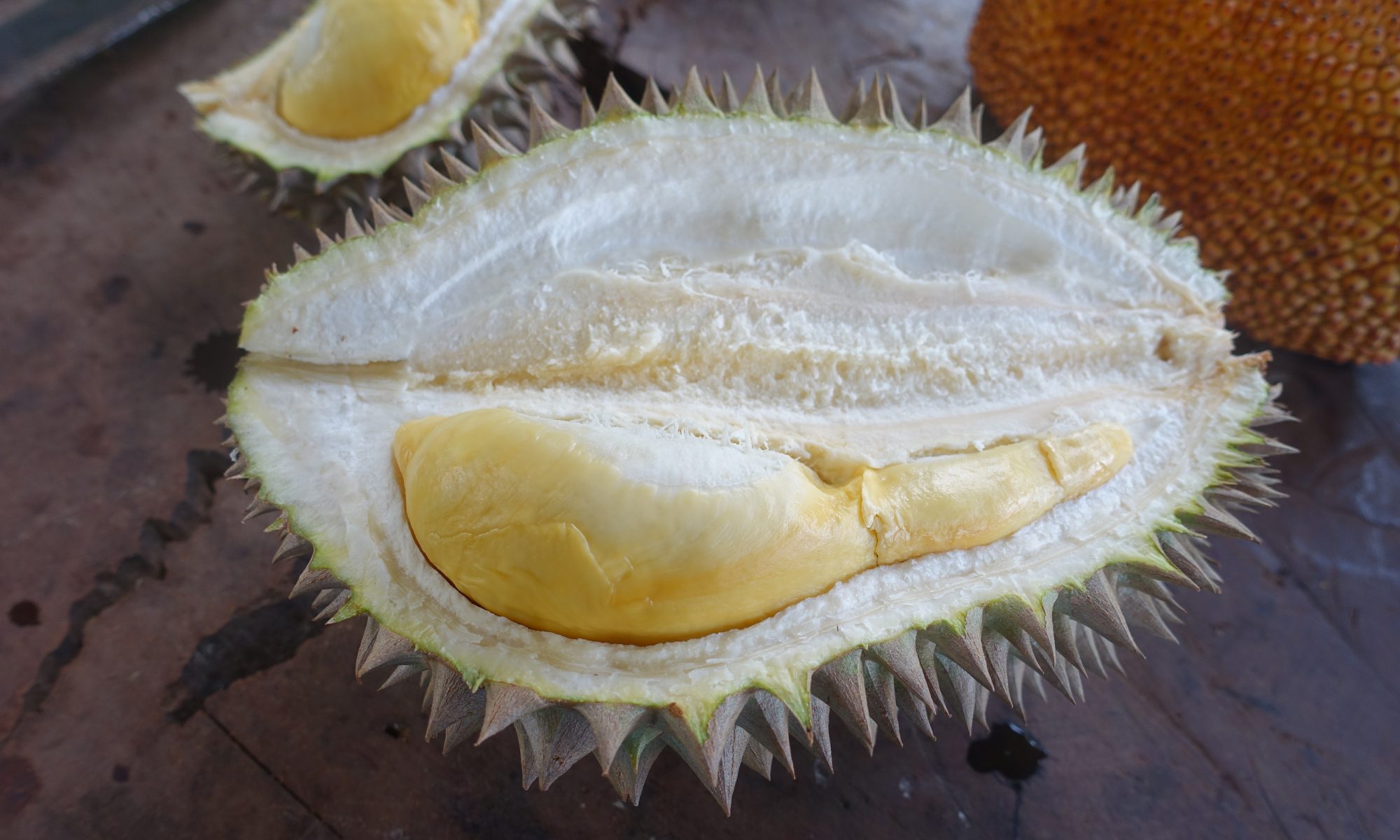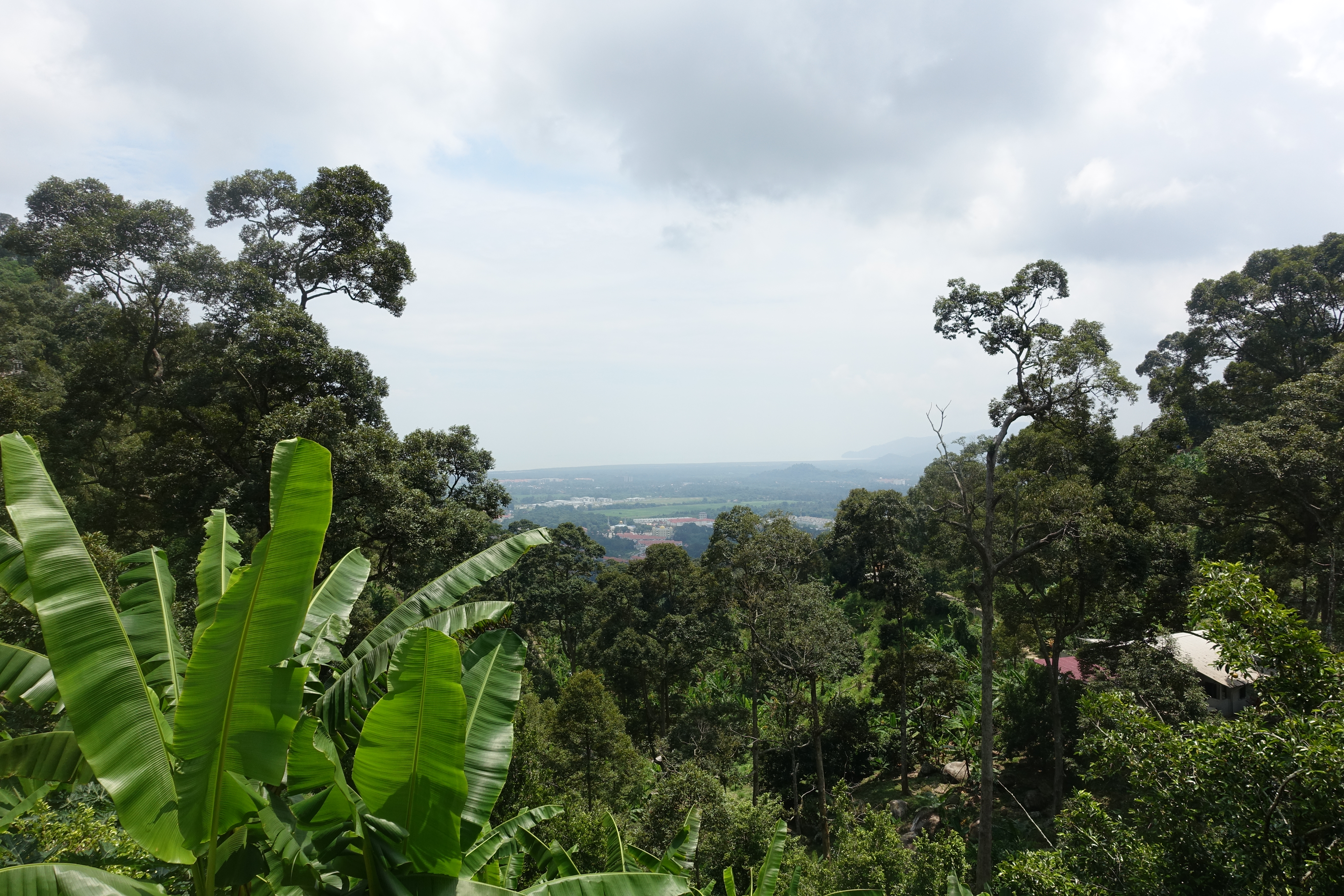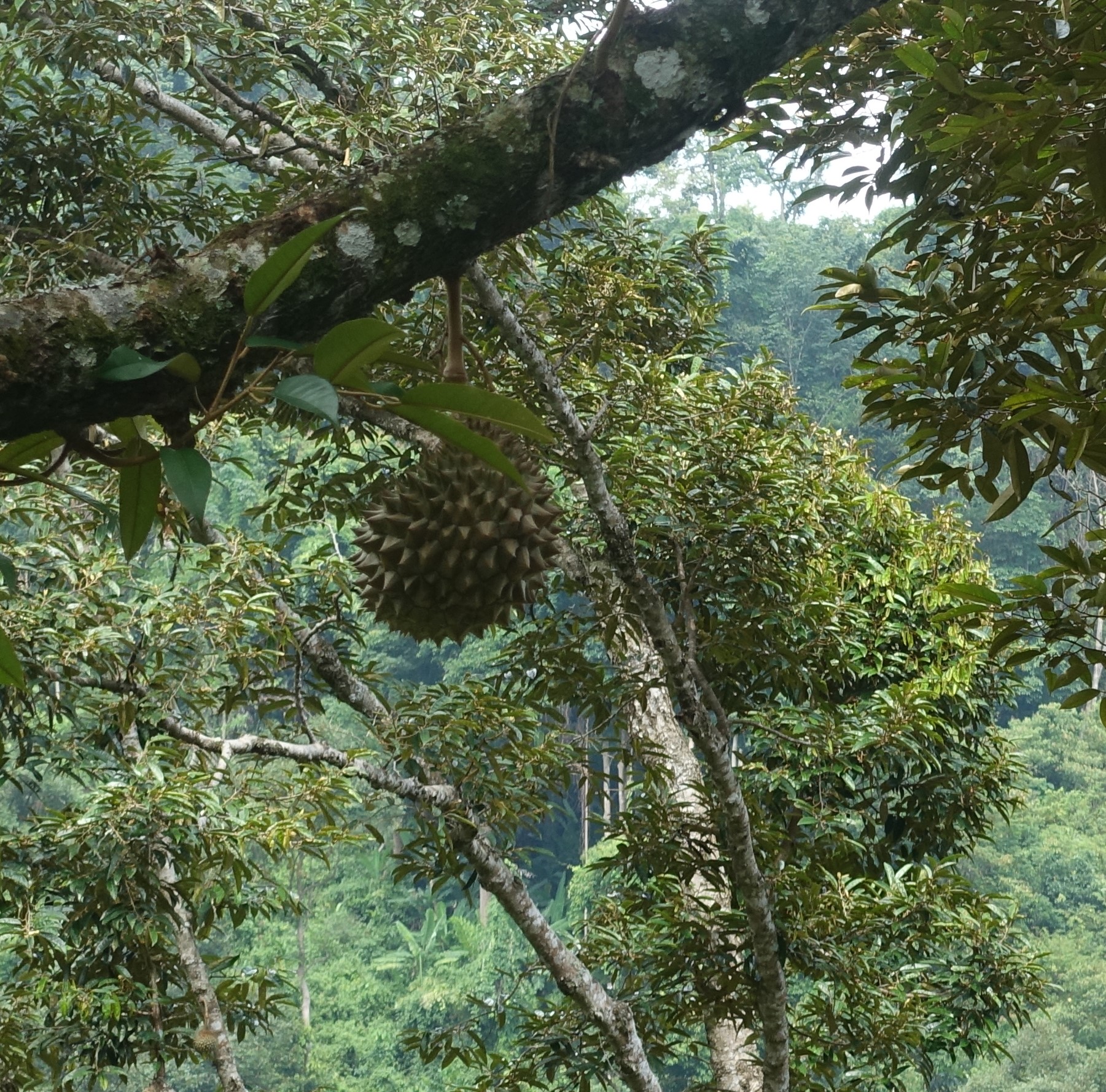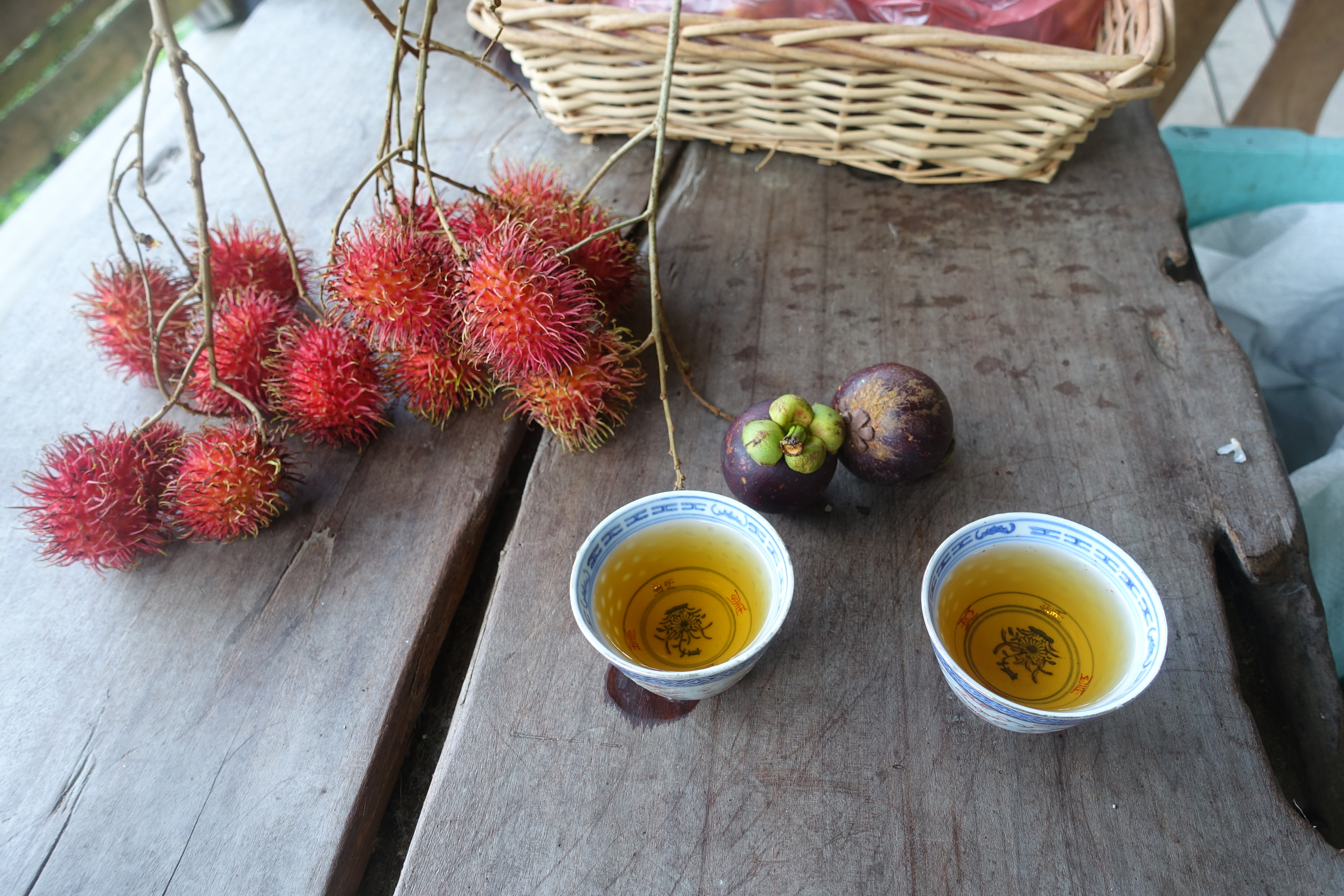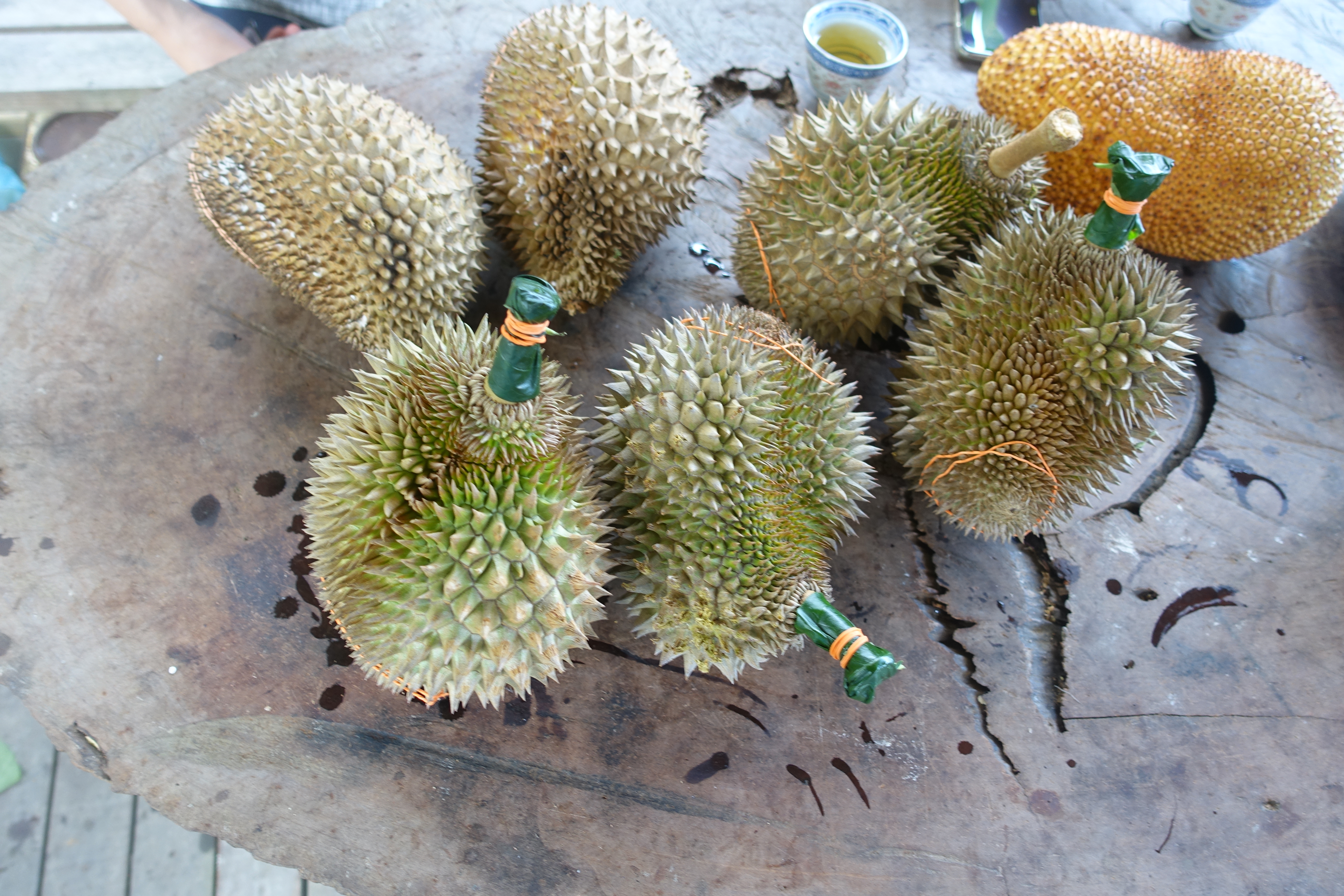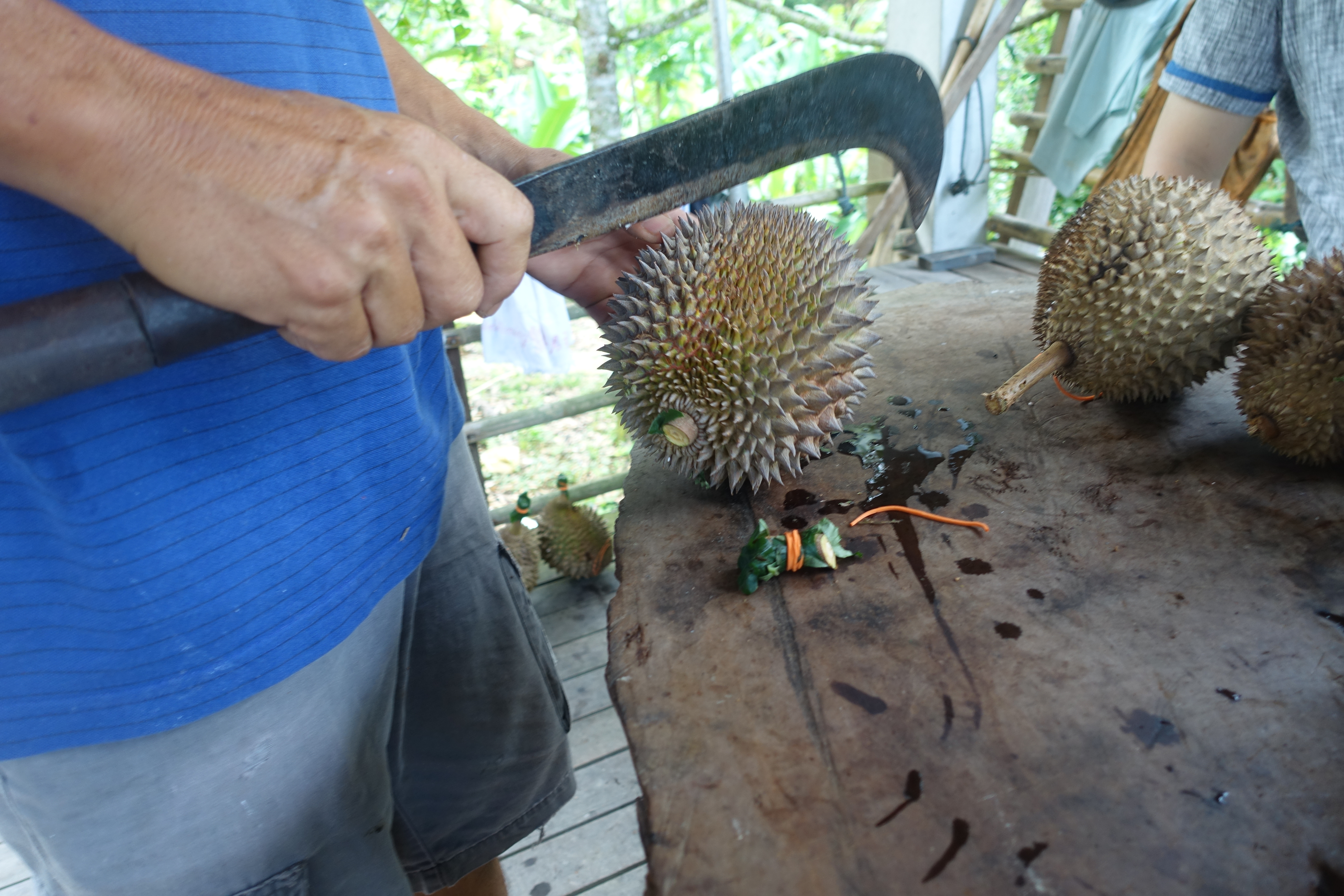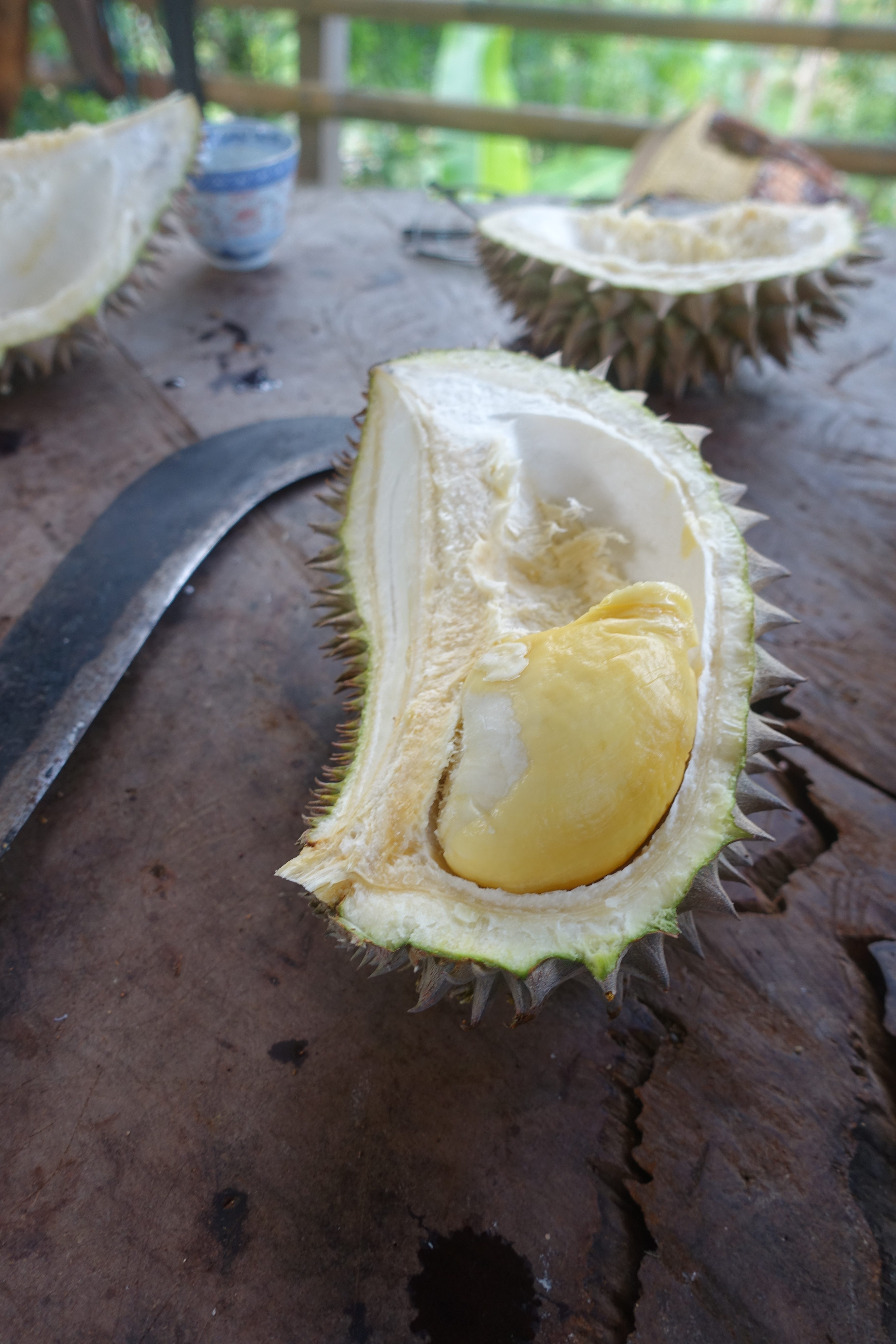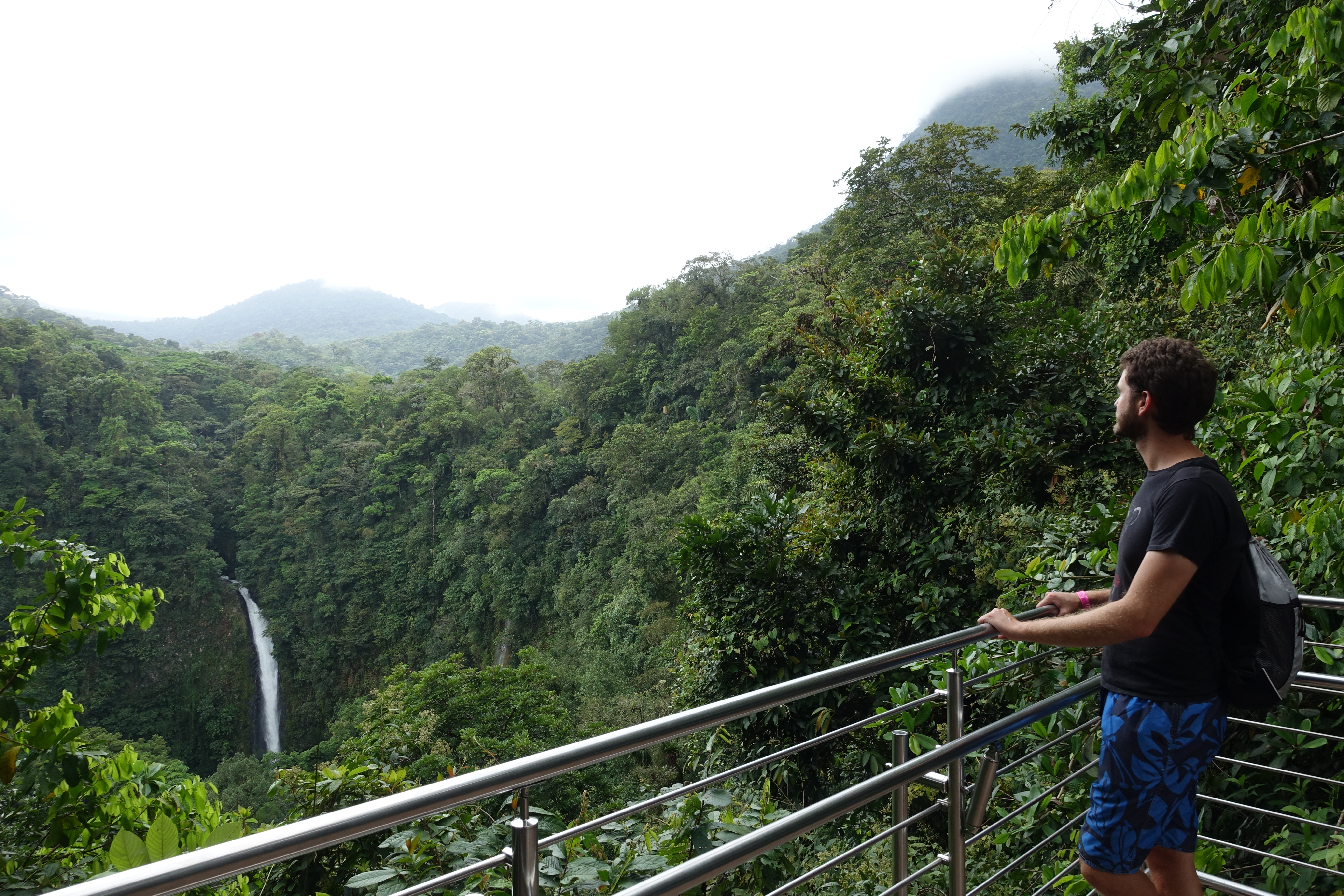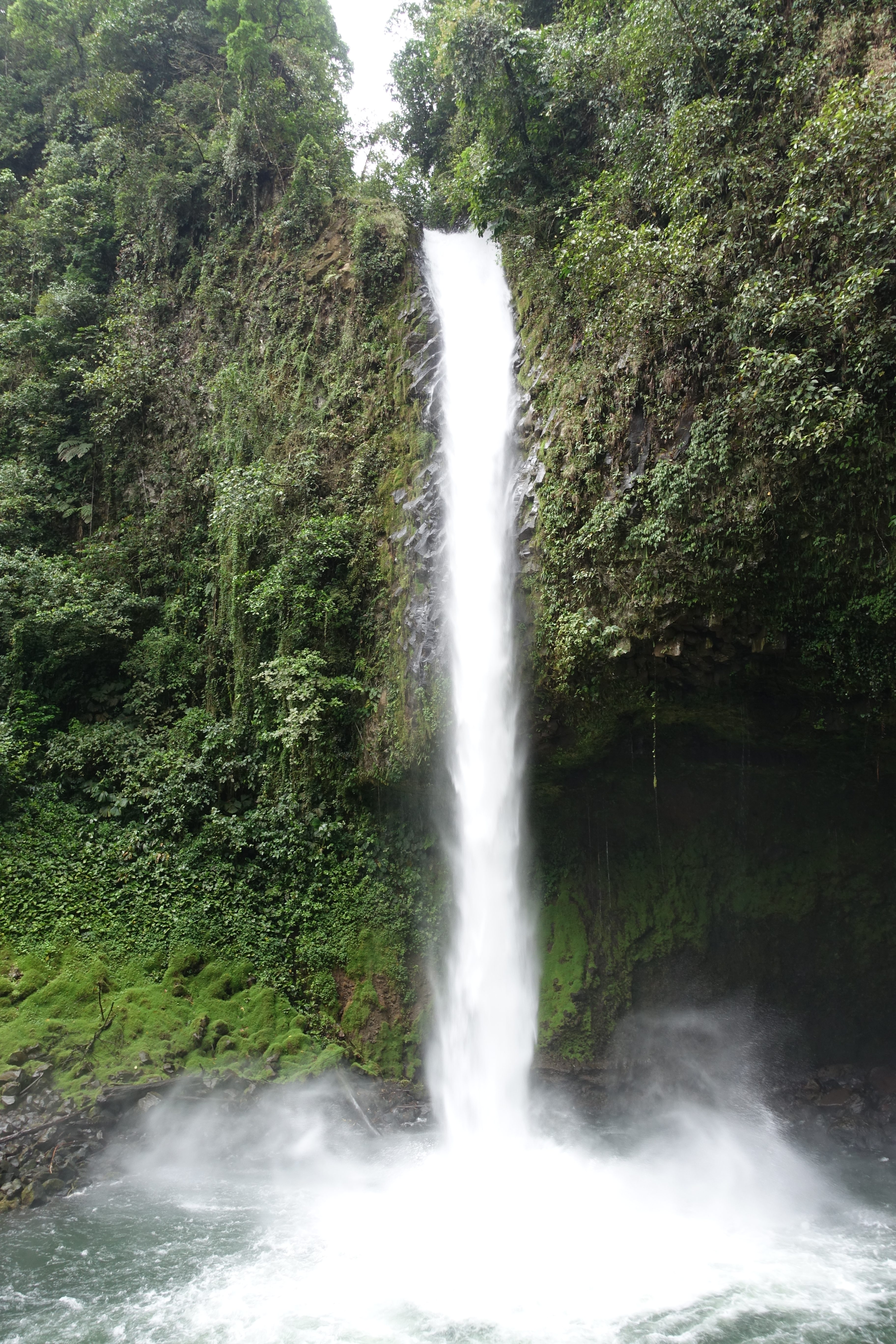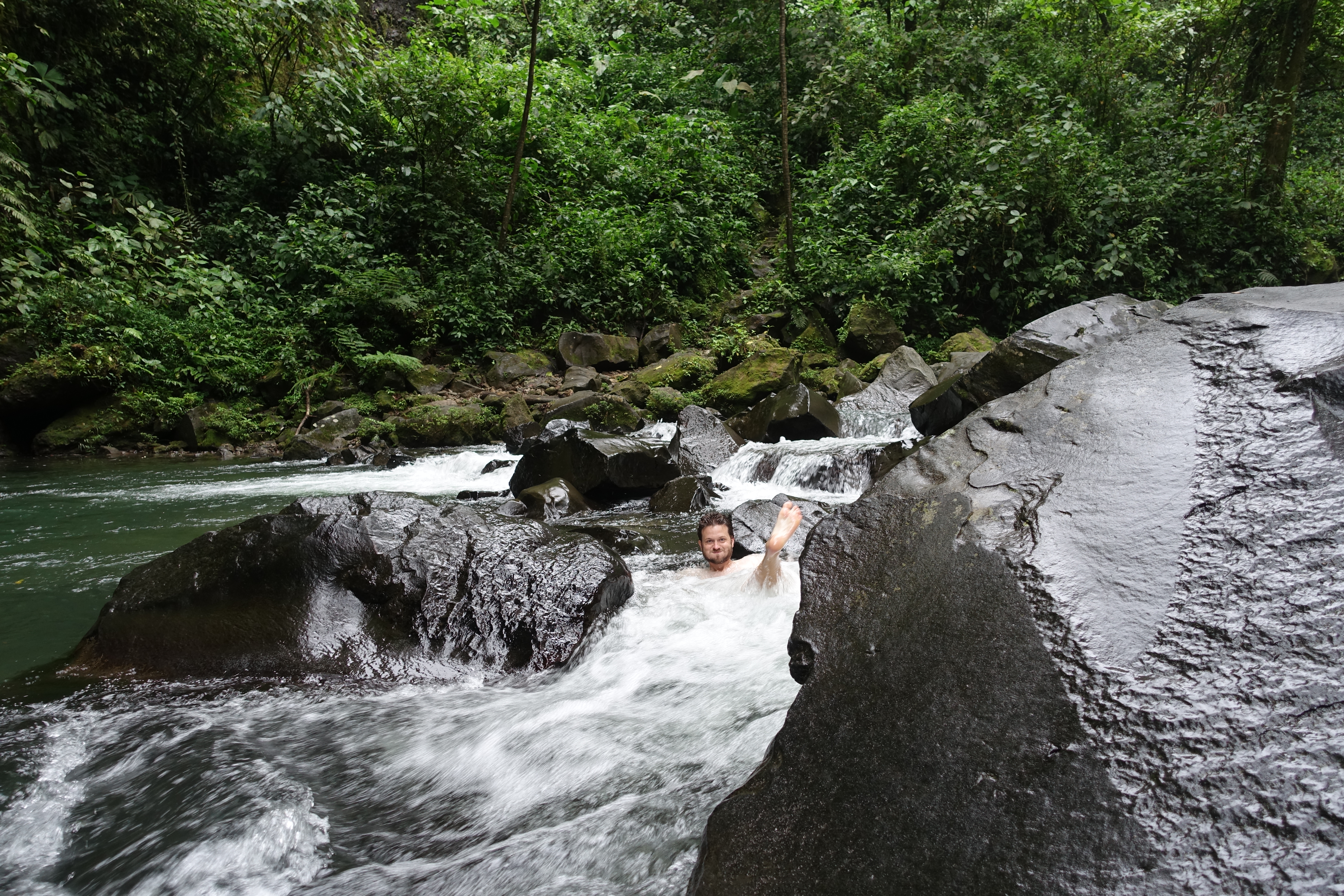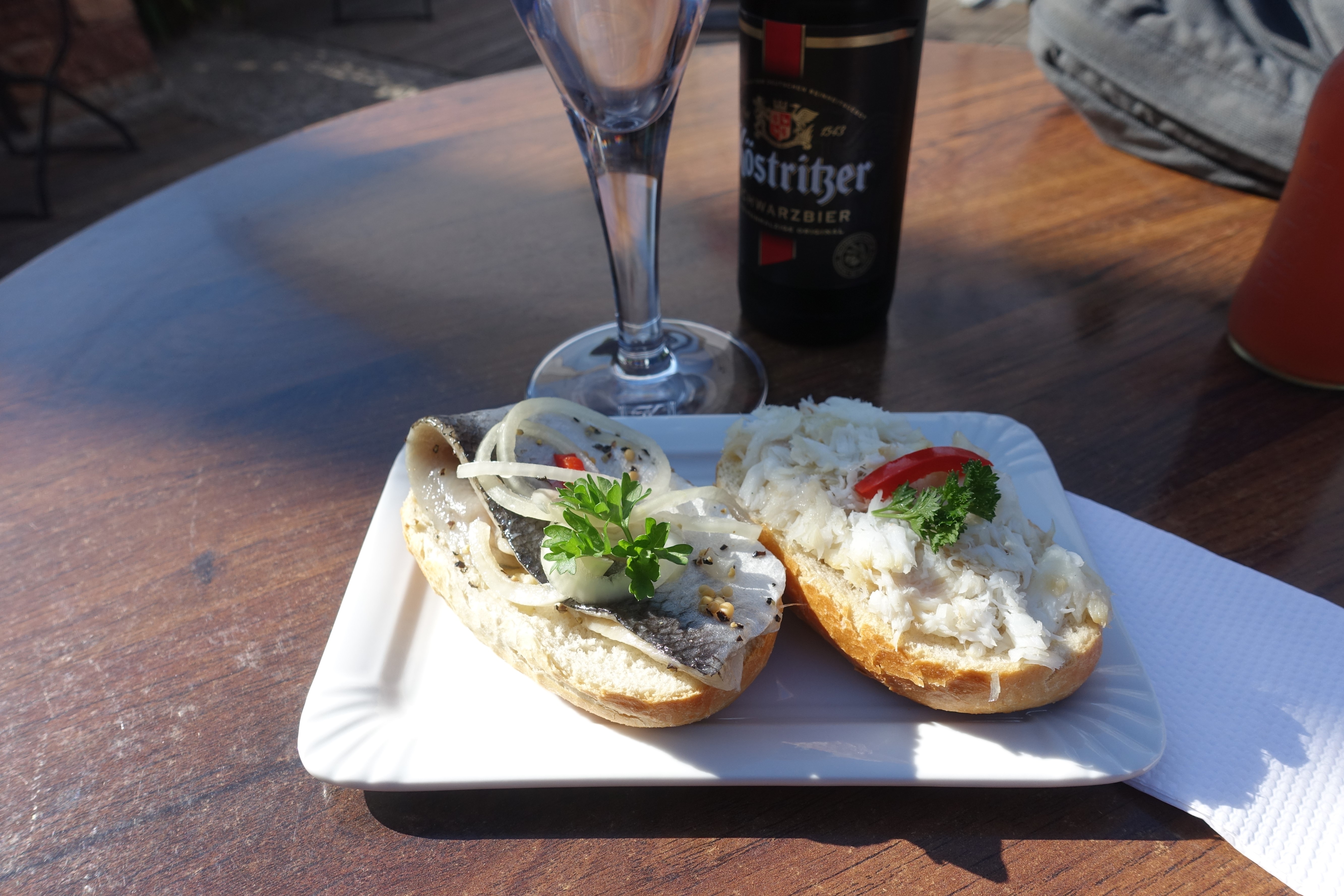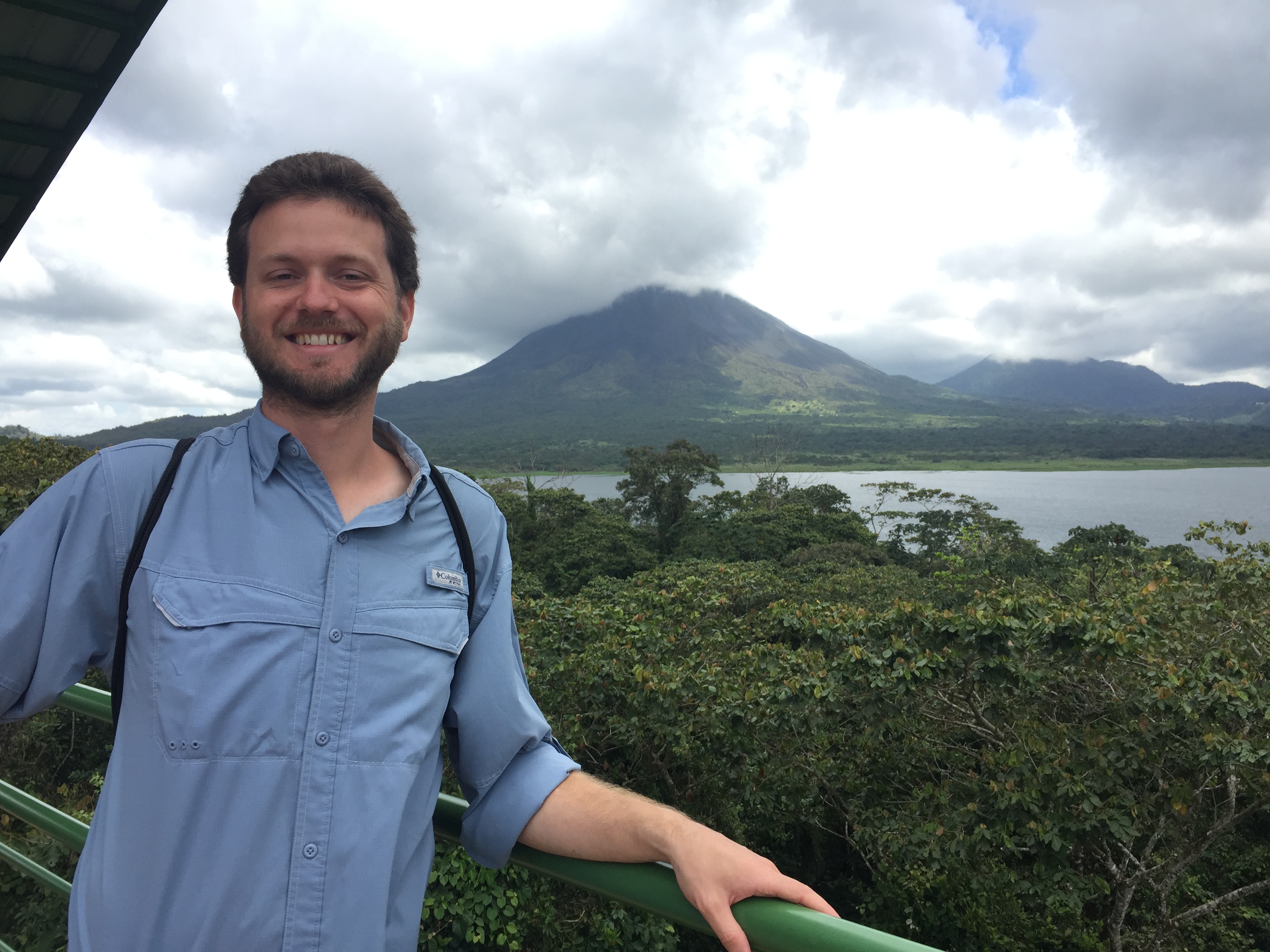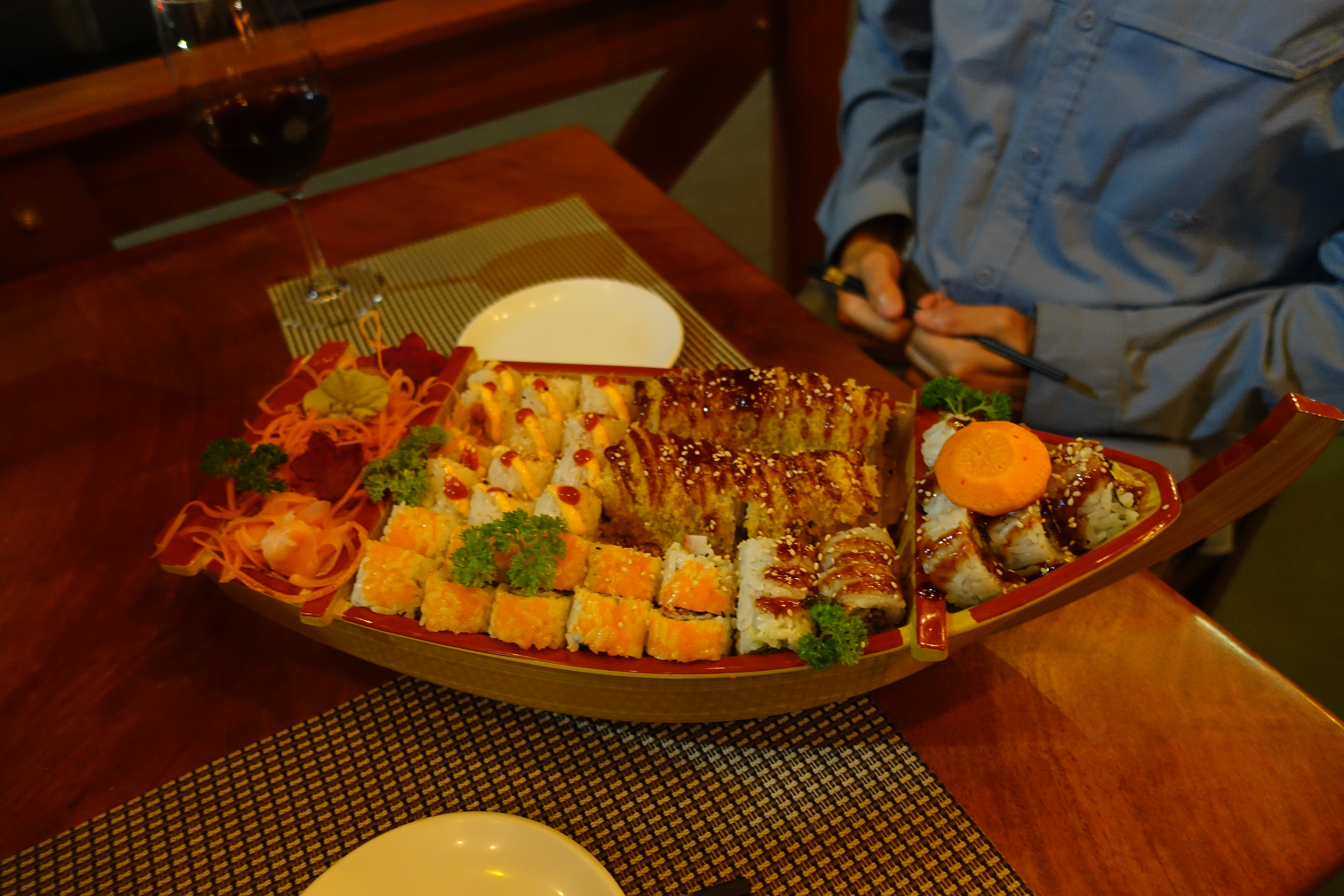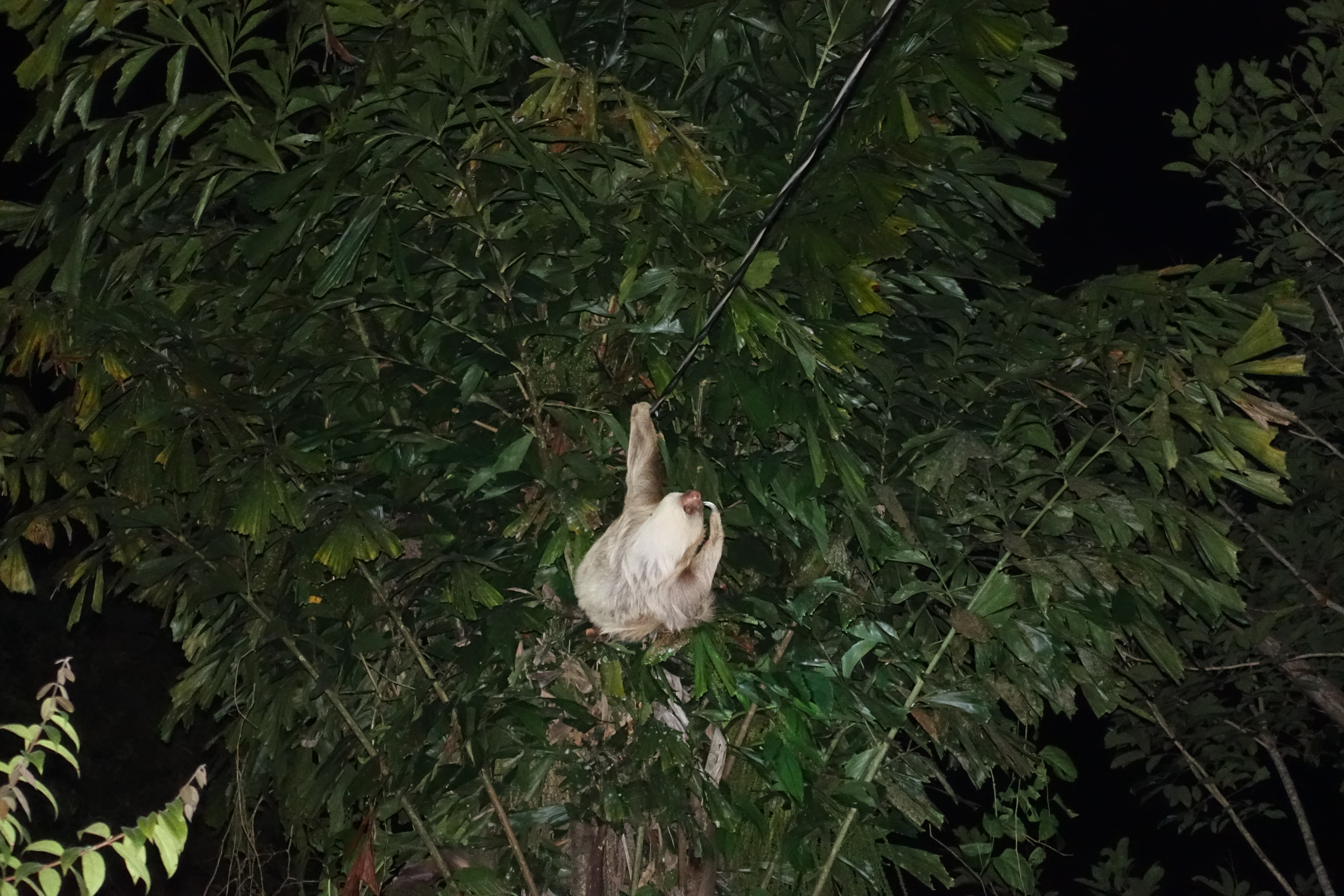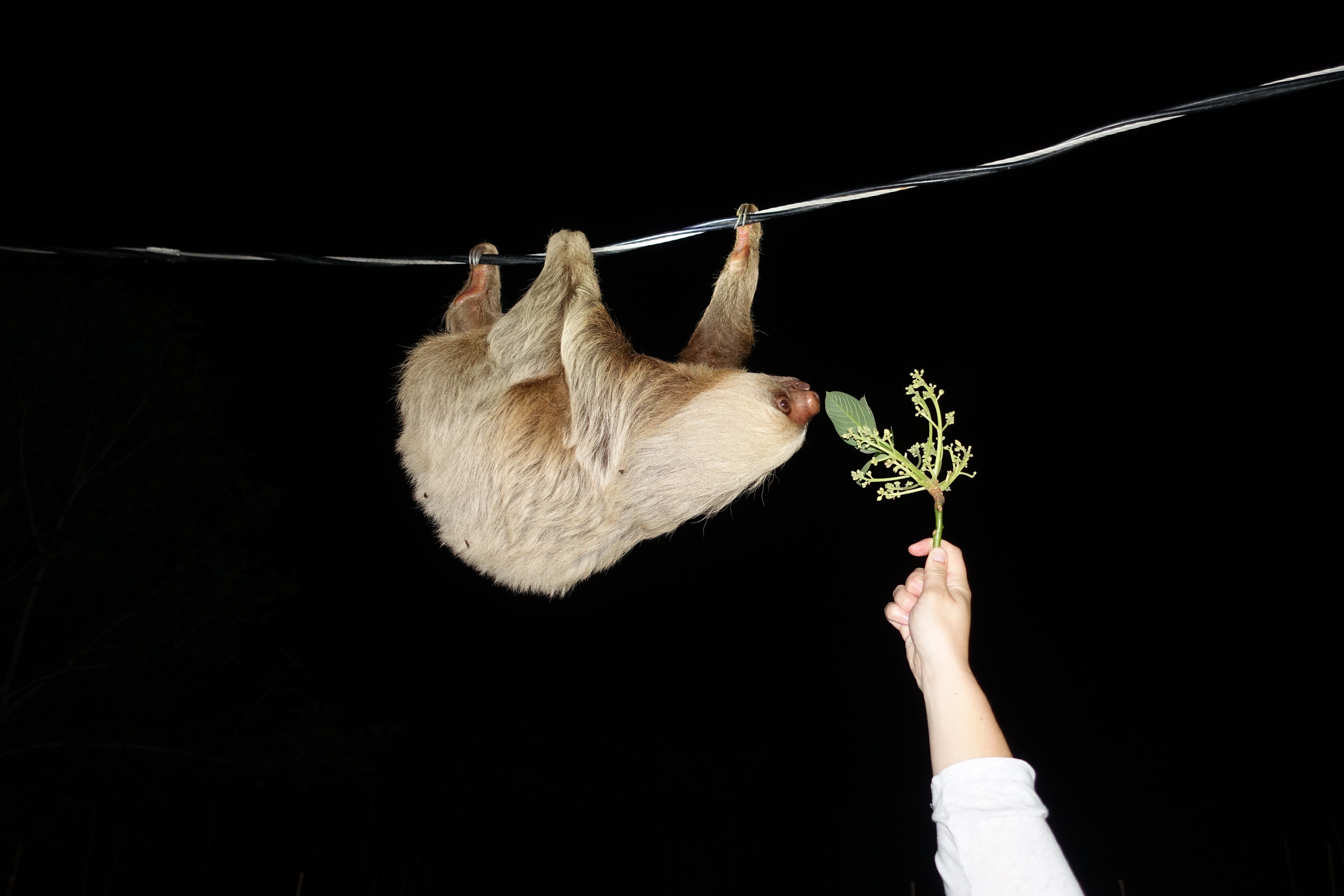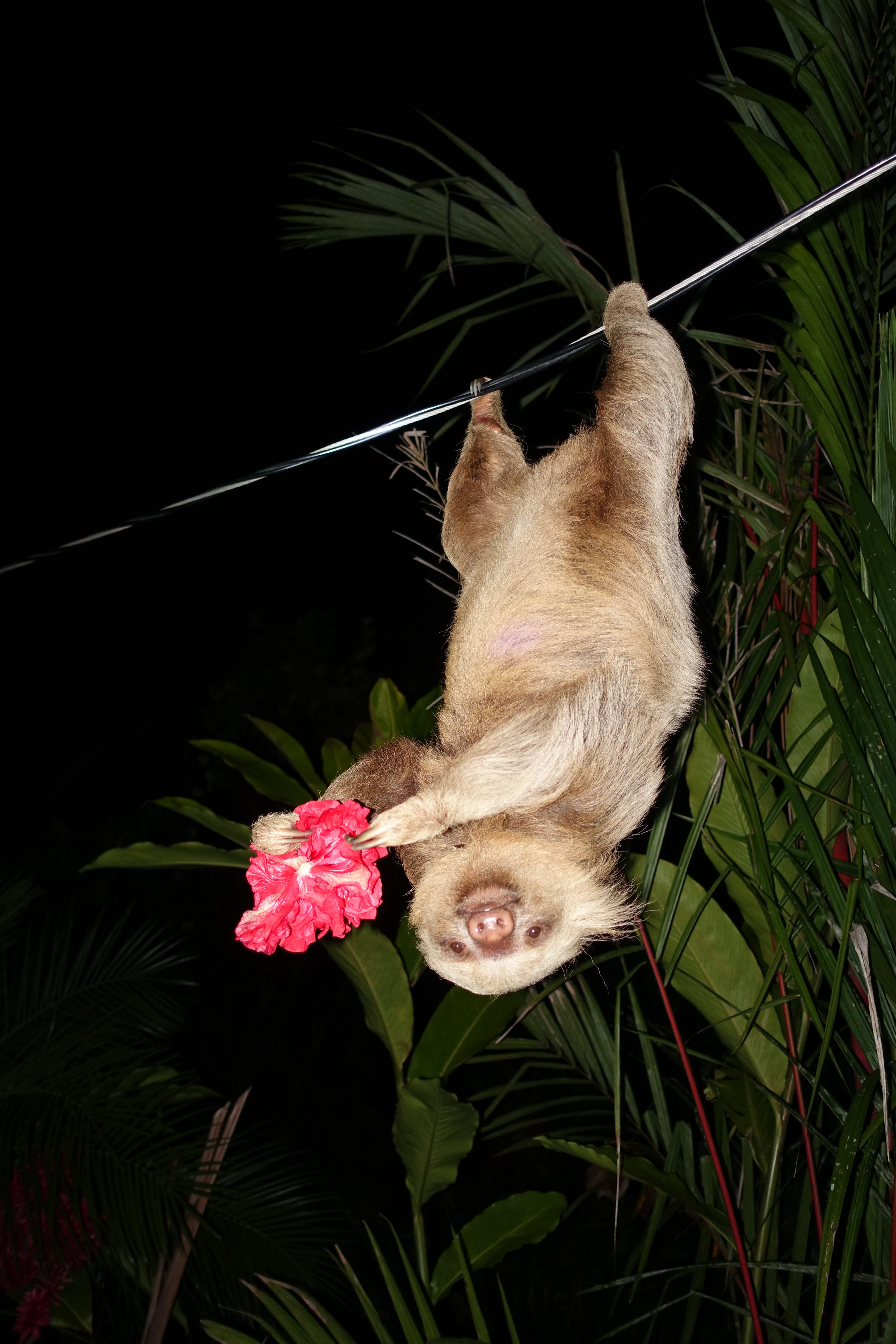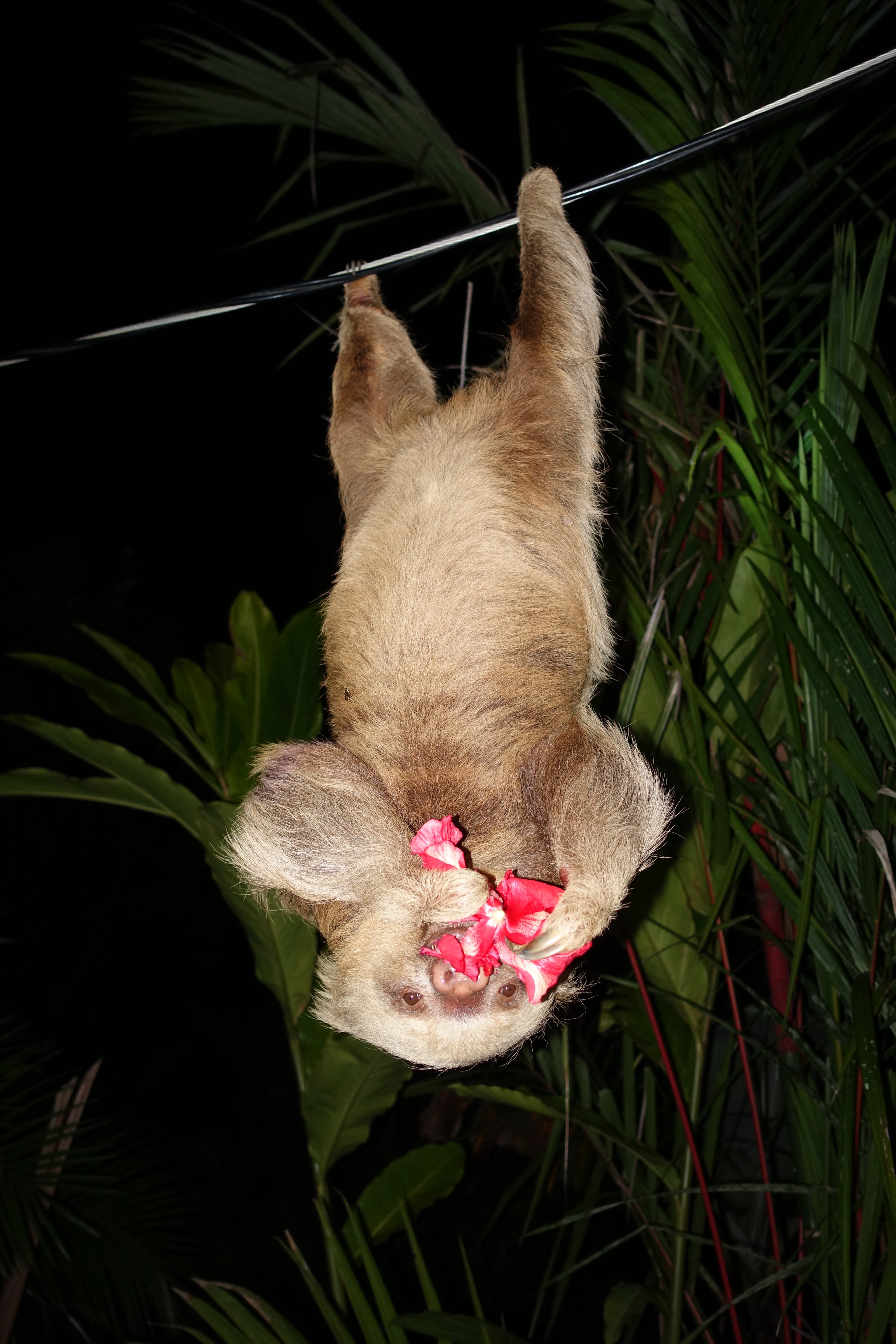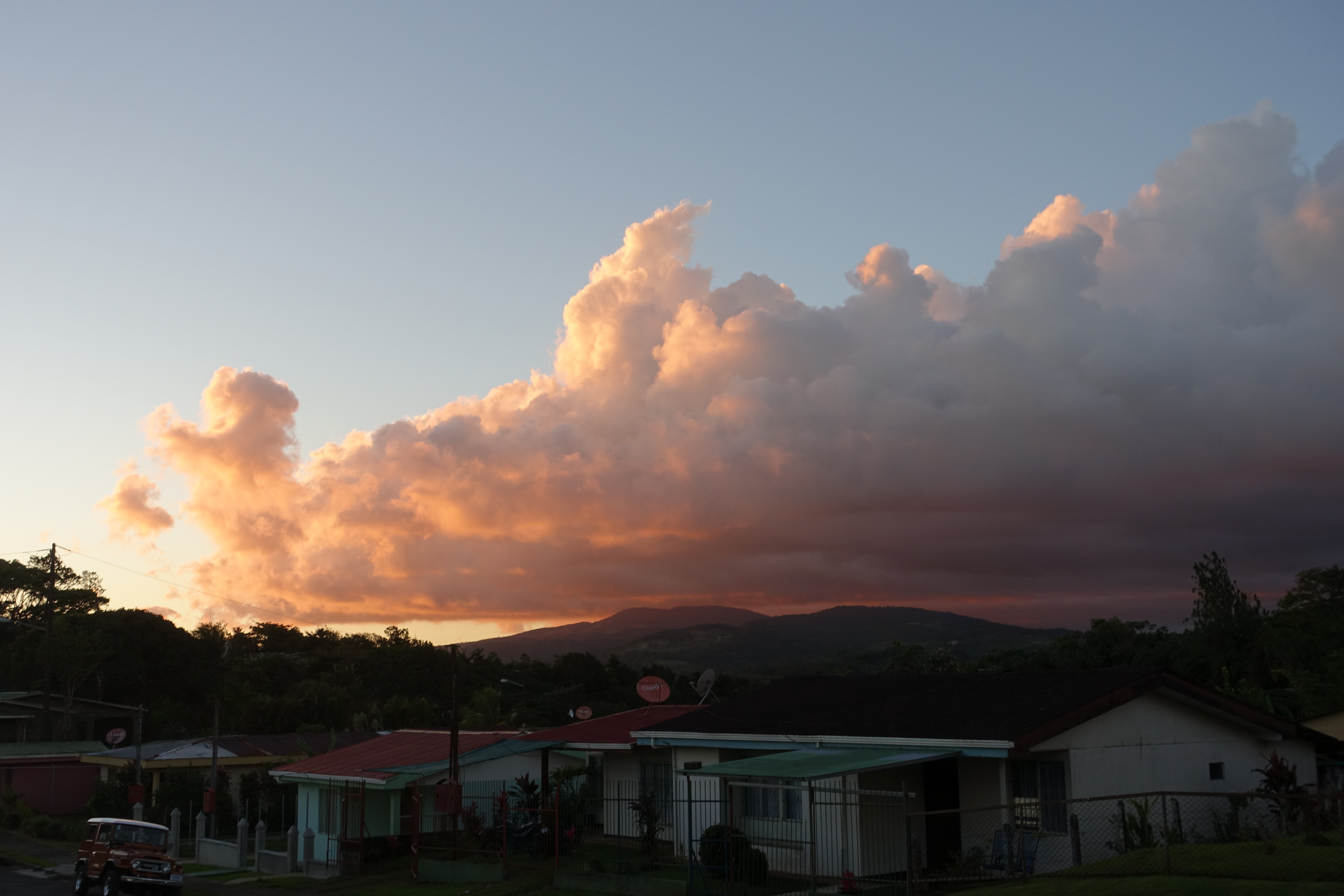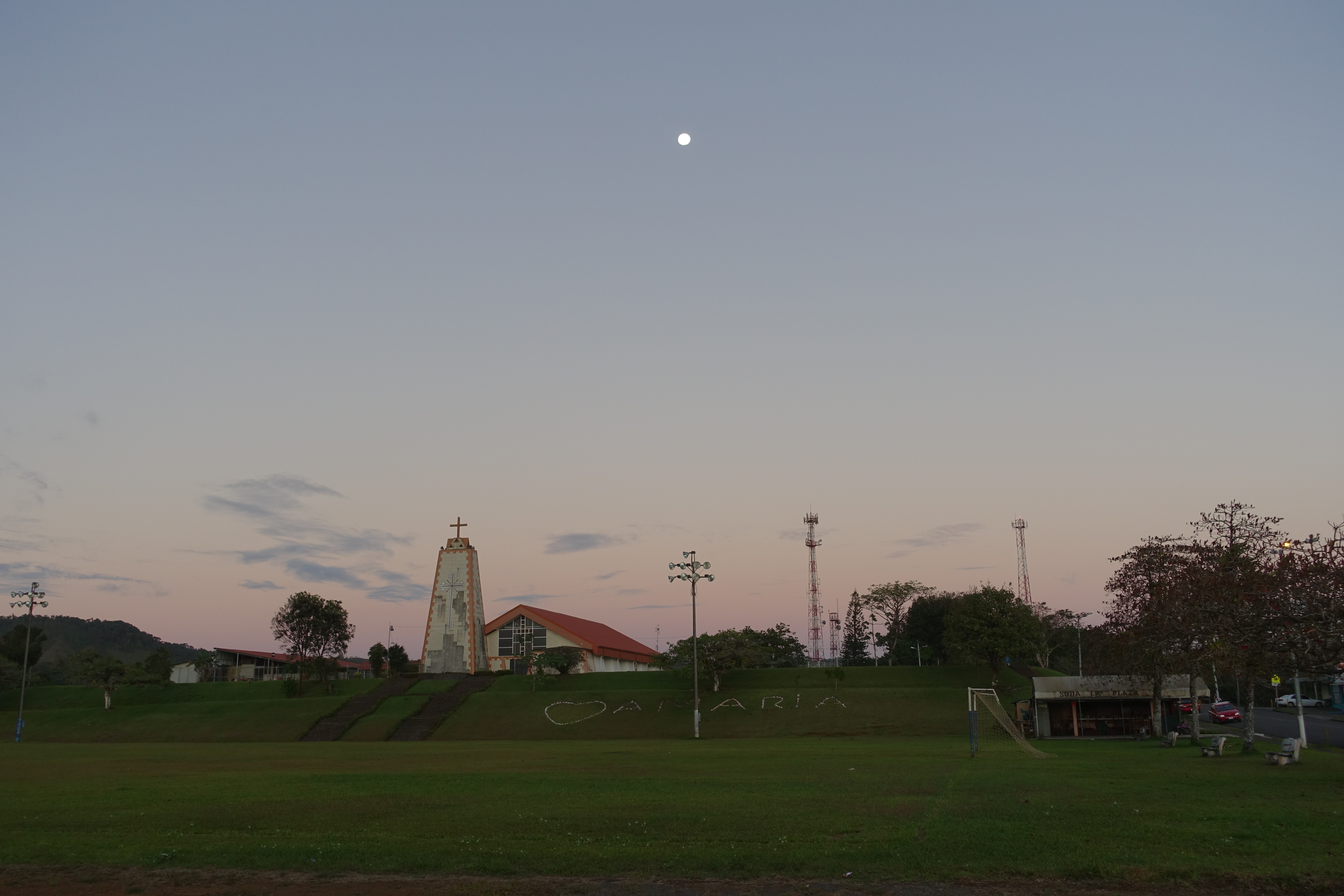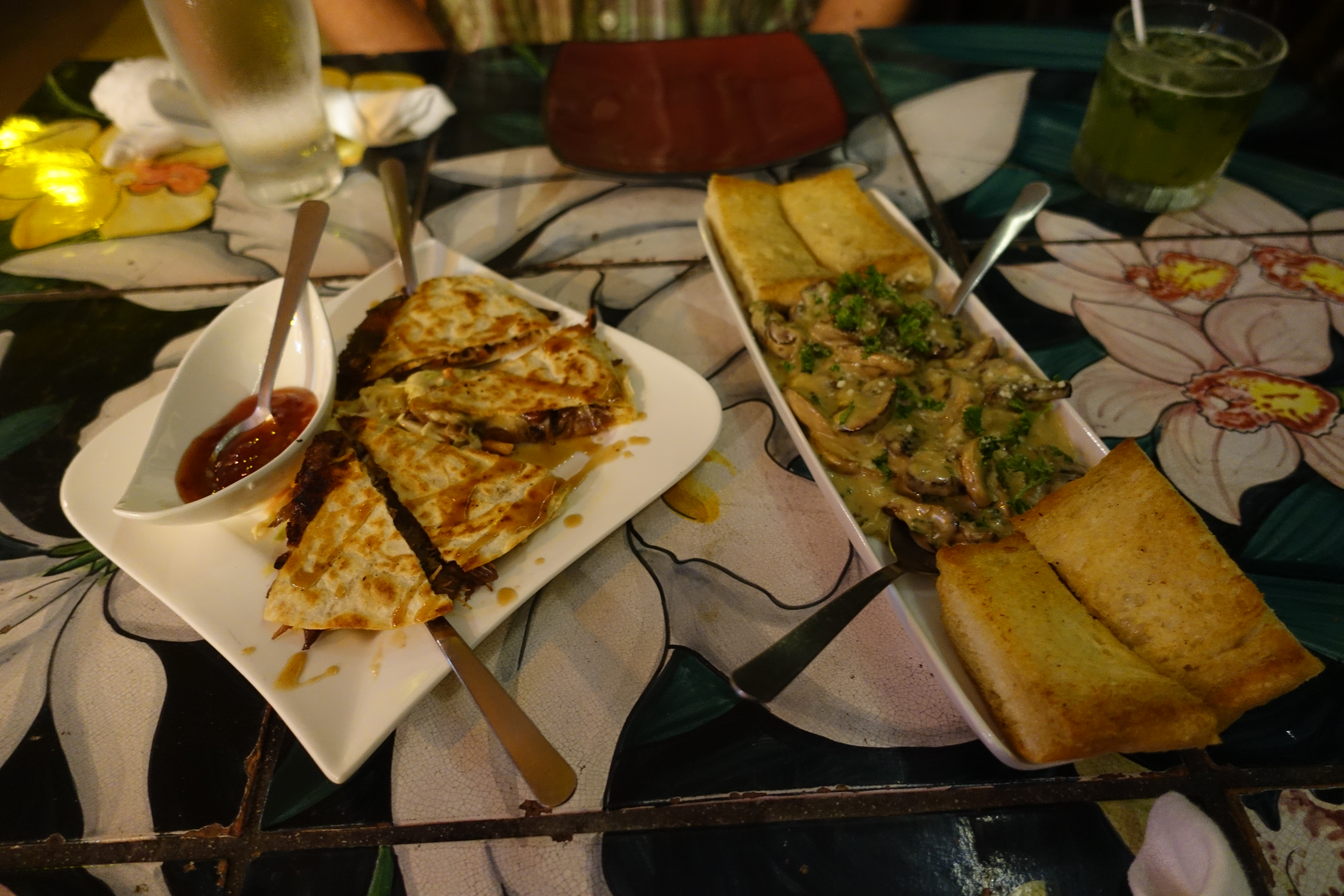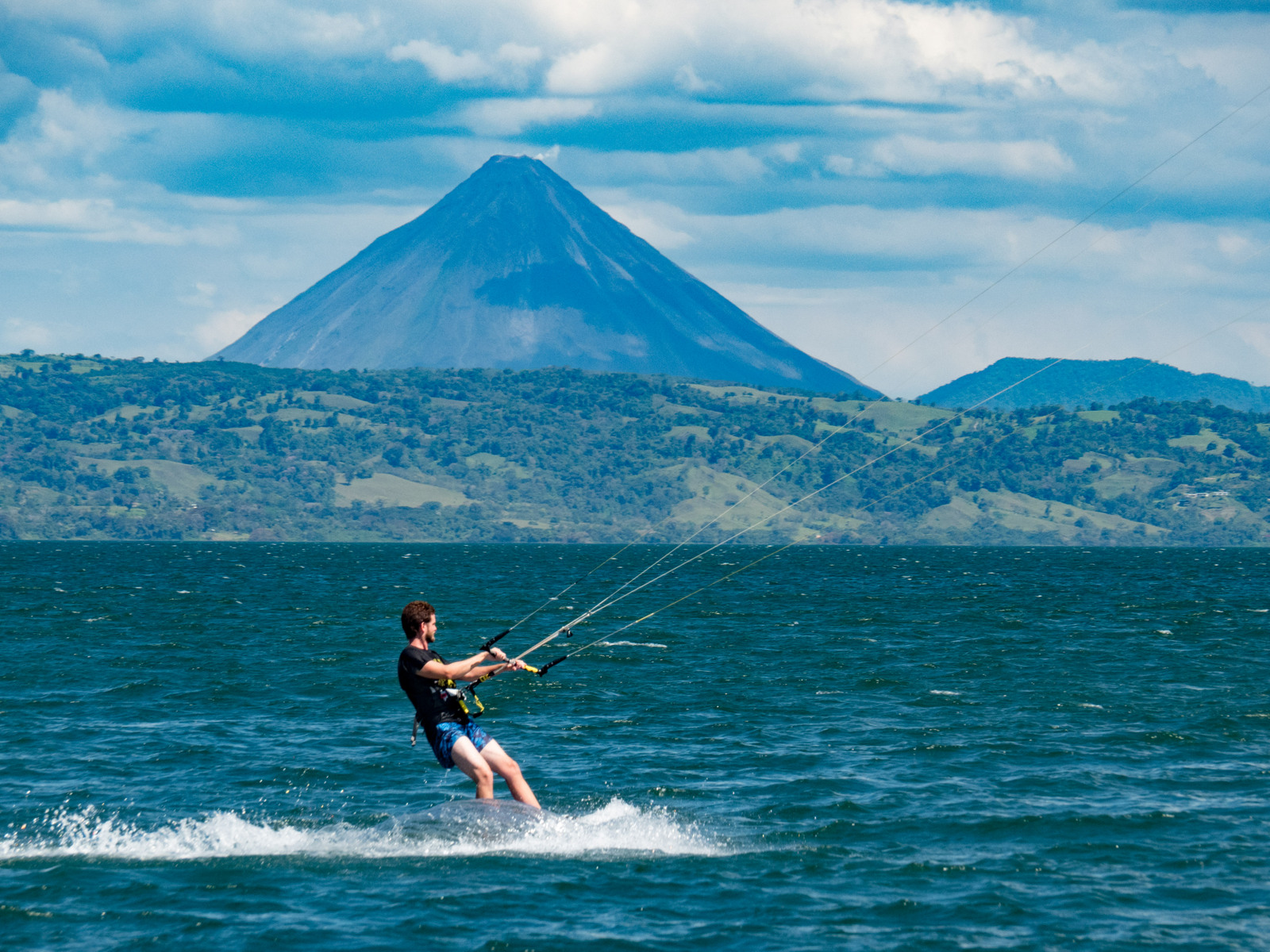I want to wrap up the story of my time in La Fortuna, Costa Rica by writing about what I consider the high point of my time there – seeing Rio Celeste. Not that some face time with a sloth and soaking in the hot springs weren’t amazing experiences. But Rio Celeste is a true natural wonder and a river quite unlike anything I’ve ever seen before. Its waters are a brilliant opaque azure blue that looks extra stunning set against the lush green Costa Rican jungle it runs through. But a picture is worth a thousand words, so I’ll save a little trouble:

Taken by Elani
To get there from La Fortuna takes an hour and a half by car. We rented one because the public transport there is not great and the tour operators are actually more expensive than the 50 USD it cost to rent a car for the day (no, it wasn’t anything fancy, Costa Rican car rentals are just really expensive). After parking and paying a guy $2 to park and/or watch our car (in all reality probably neither), we set off on a rather muddy path through the jungle. This part of the trip was quite nice in its own right, and had some rather picturesque, if small, residents. There were a couple of varieties of grass hopper that I didn’t find anywhere else. There was even one that had its legs stinking out to the side instead of up, as is the usual configuration:
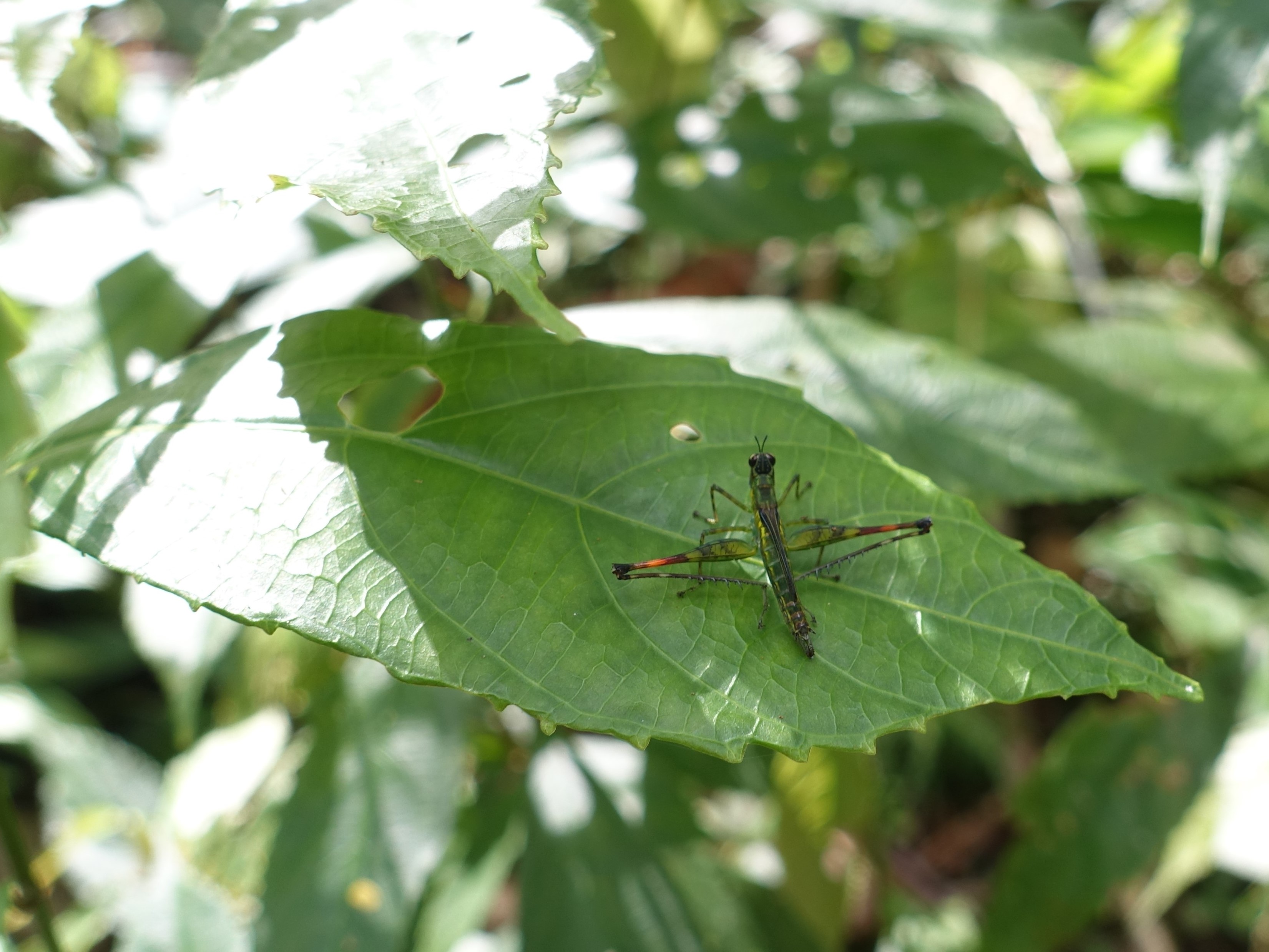
Taken by Elani
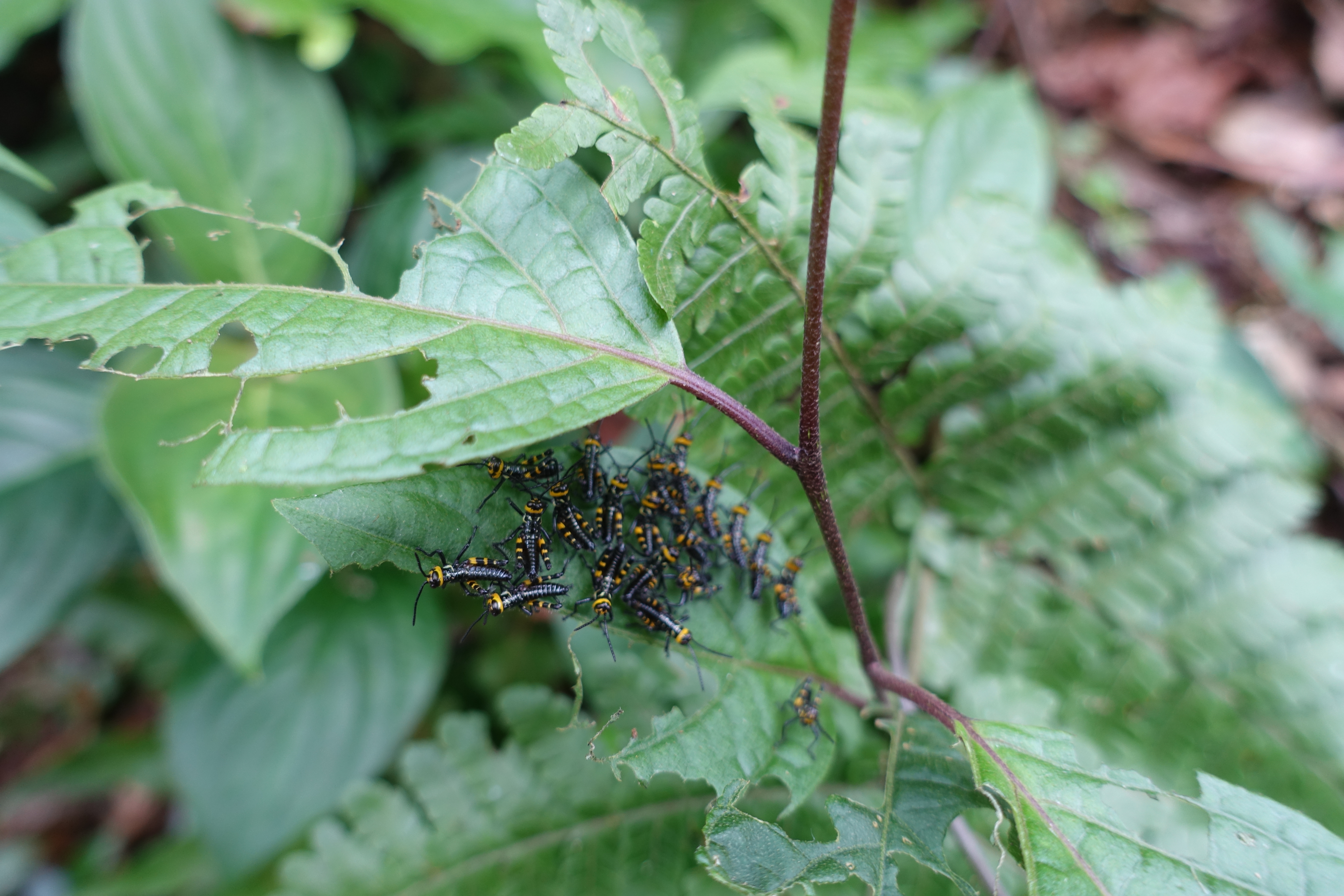
Taken by Elani
There was a little lizard that, if I didn’t miss my mark, is a variety of anole, and whose camouflage was good but not good enough to fool this higher primate:
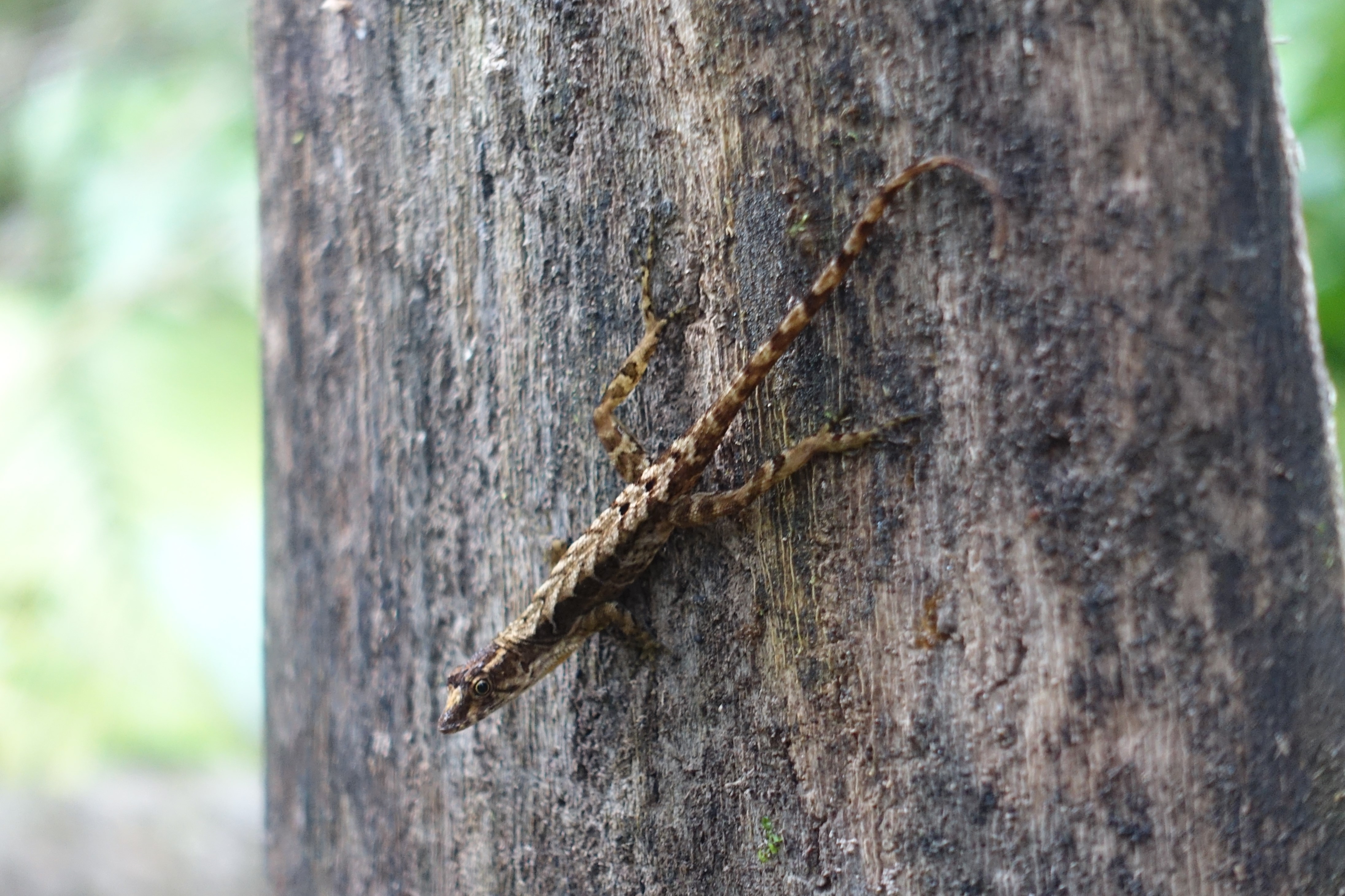
Taken by Elani
And this little guy, a stick insect hatchling, who hitched a ride on me until I spotted him and left him on the some of the nearby foliage after a brief photo shoot:
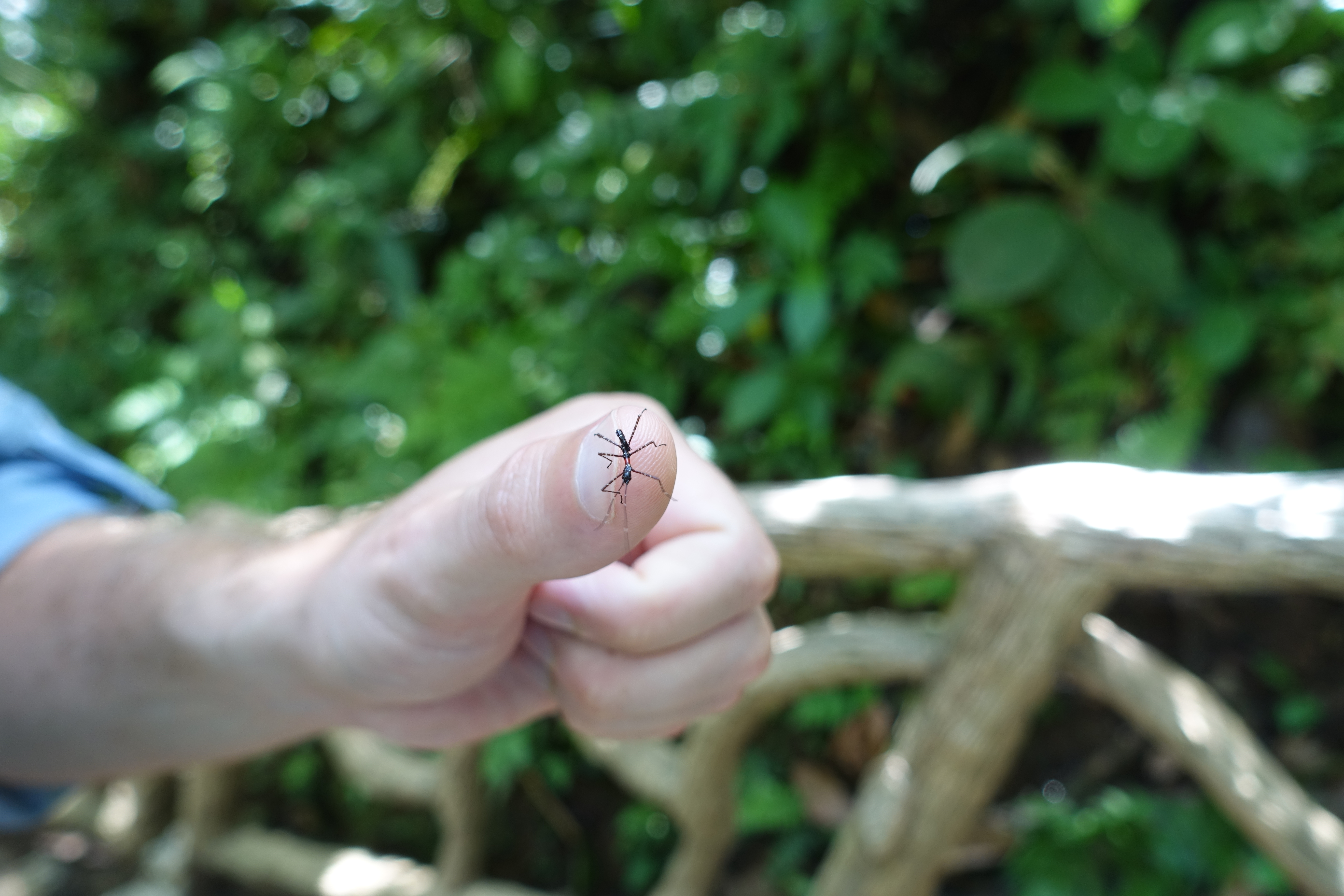
Taken by Elani
On the roughly half hour hike to get to the river, Elani and I had caught a few glances of the river through the trees, then we came to the first clearing where we could get a close up view:
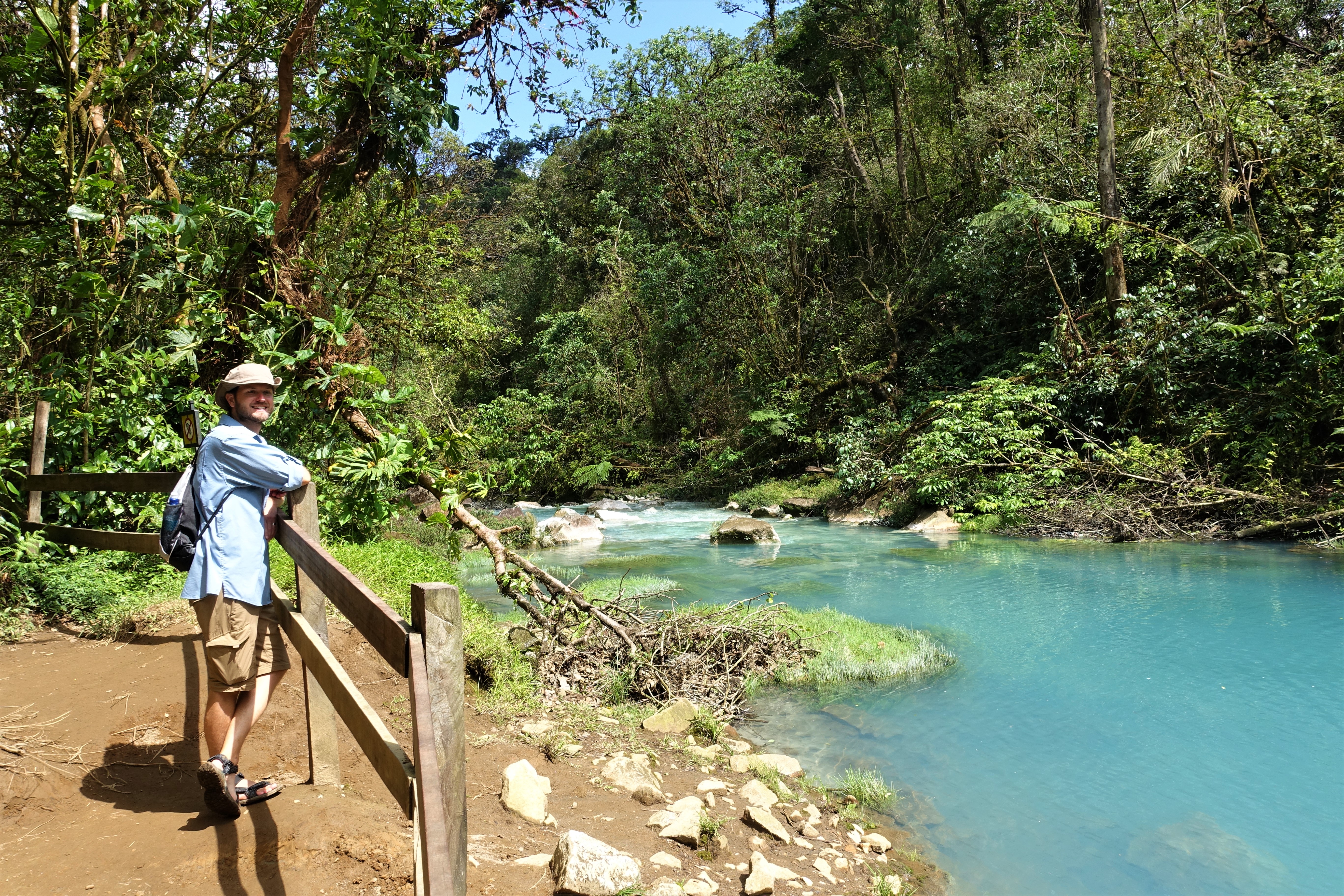
Taken by Elani
Really, the pictures don’t do it justice. In part, that’s because there are so many enhanced photos out there, but really seeing that deep solid impenetrable blue with my own eyes was quite spectacular. But even though they don’t really capture it, I’m still going to keep including pictures, because they do look awesome:

Taken by Elani
We continued to follow the trail upstream, crossing the river a few times on bridges that stated rather explicitly that they were for one person at a time. Seeing a sign like always makes my engineering training kick in and I have to wonder, what safety factor did they use? I figure those bridges have to be good for at least one and a half people at a time, probably two if their small. Oh well, I guess it’s not a long drop anyway. The bridges did give me a chance to stare down into the waters. At this point (it turns out we were getting quite close to the source), I could really only see a few inches below the surface, and on the rocks and branches on the sides that I could see, there was a strange colored bluish/greenish algae that was weirdly close to the color of corroding copper.
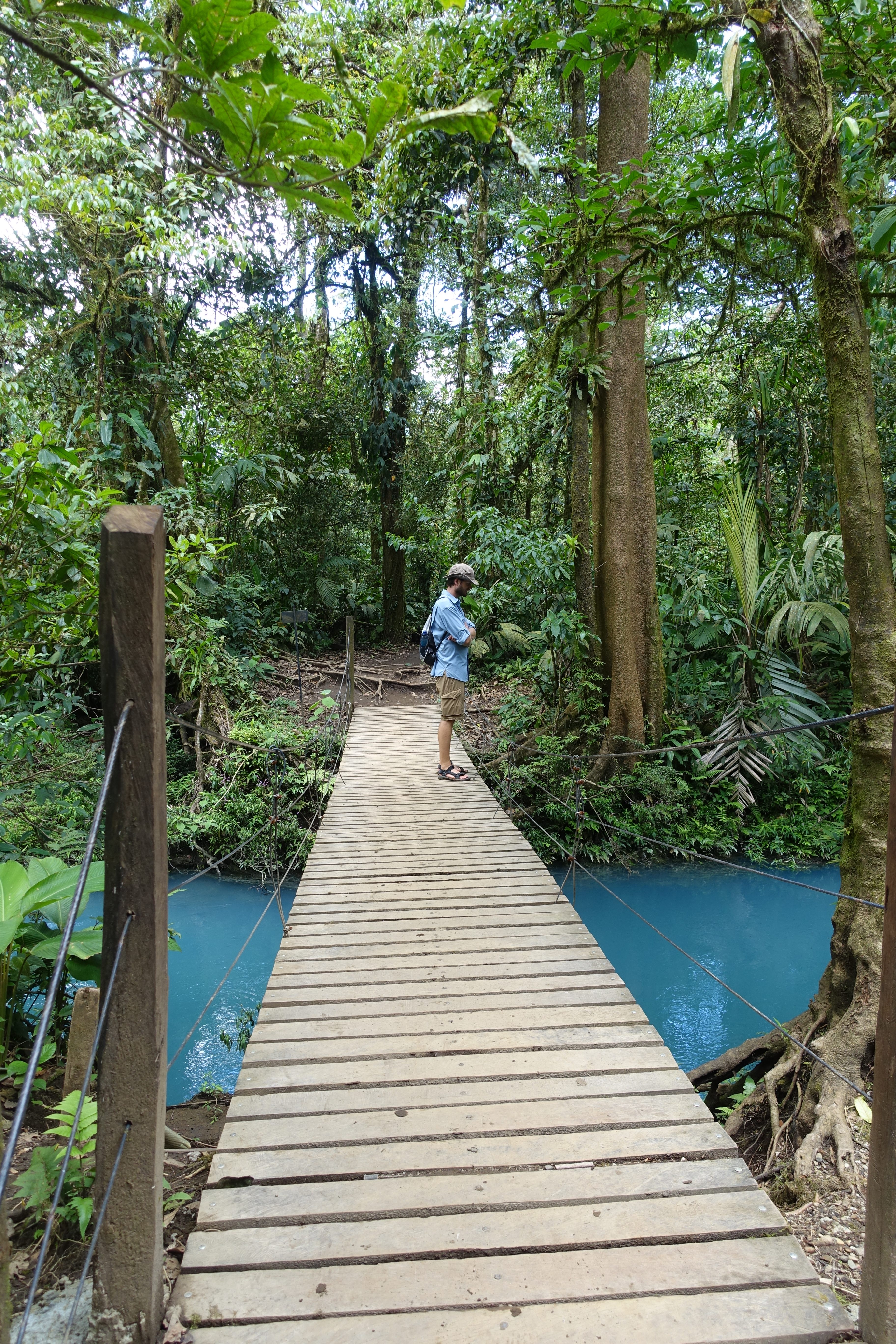
Taken by Elani
Continuing on, we came to what was the most remarkable (though I would say not the most stunningly beautiful) spot on the river. That was the place where it turns blue. That’s right, Reo Celeste is a normal looking clear river up to a certain point, but when a tributary flows into it, it turns that amazing milky blue. It’s not a gradual change either, there’s a sharp line in the river where the waters mix and all the sudden – boom, blue water. It’s pretty crazy. So what the hell is going on? Well, there are two explanations, and I like them both for different reasons, so I’ll relate them both. The first is that the main river contains aluminosilicate in suspension. The pH change at the mixing point causes the suspended particles to increase in size. The new larger sized particles now reflect blue spectrum light, giving the river its color. I summarized this off a surprisingly technical, though not well translated, sign in the park, so take it with a grain of salt. Or perhaps a particle of aluminosilicate might be more appropriate. The other explanation may lack a bit of scientific rigor, but it is rather poetic, a heck of a lot easier to remember, and does a nice job of catching the feeling of staring in wonder at those blue waters for the first time. It is that after painting the sky, Rio Celeste is where God dipped his paint brush. Well, either way, the spot where those rivers come together is where the magic or science or whatever happens. And it’s pretty amazing to see:
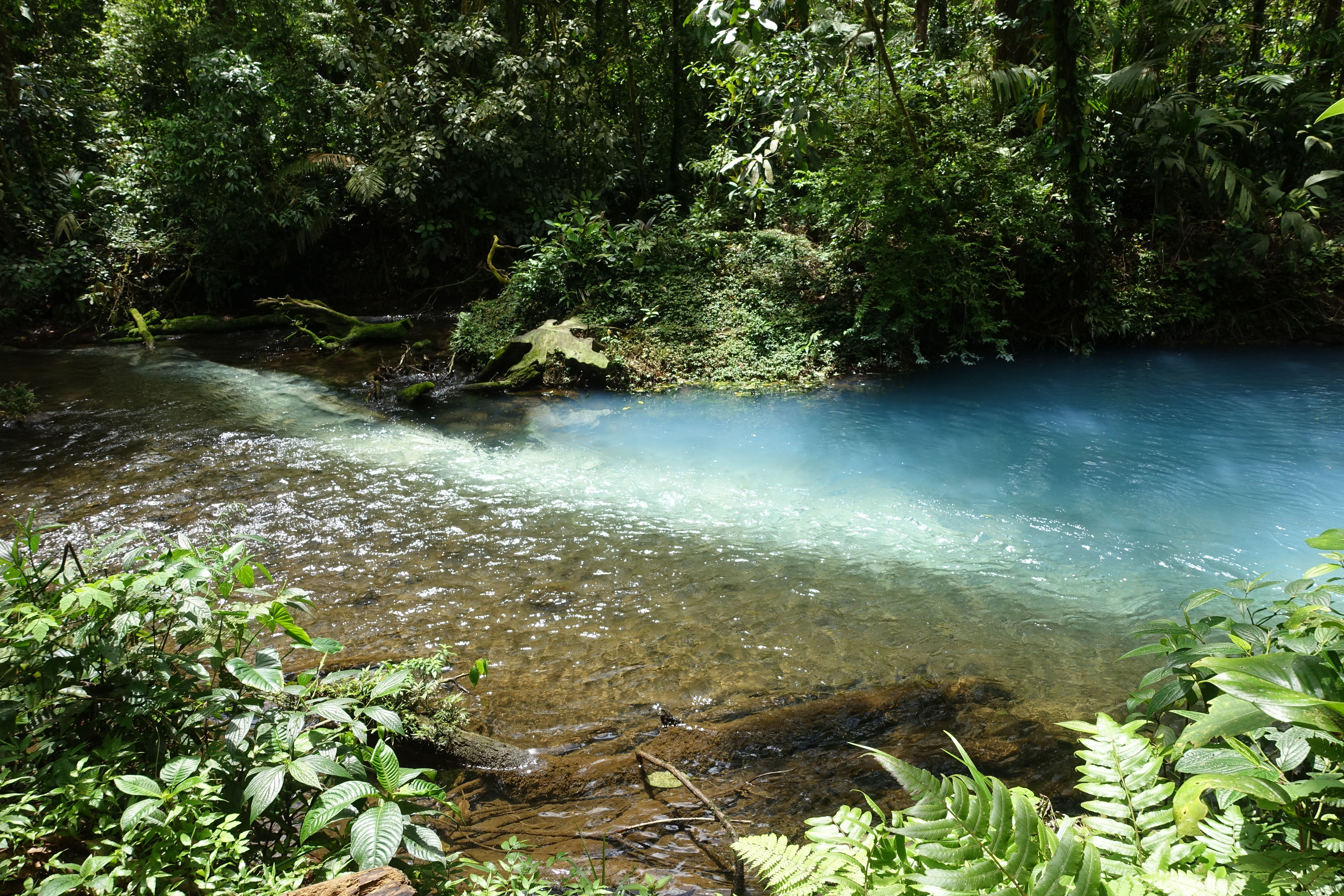
Taken by Elani
But what is probably most amazing is that the point where the color shifts isn’t even the most scenic part. We back tracked our way down river and took a path leading to a long (and fairly slippery) stairway that leads to a platform overlooking the most ridiculously beautiful waterfall I’ve ever seen:

Taken by Elani
Definitely one of those spectacles you just have to stand and stare at for a while. Unfortunately, even though those waters look cool and inviting, especially after a hike in 85 degree F heat, there is no swimming allowed in the park. Probably for the best really, not sure I really need to see a bunch of half naked tourists lining up to all get the perfect new profile picture. However, that’s not to say that Elani and I didn’t get a chance to take a dip. A couple miles from the park there is an overpass where you can pull over and head down to the water. In case you’re curious, the water doesn’t feel any different than normal water, but it has a slight metallic smell. The oddest thing about it was that you really couldn’t see more than a foot beneath the water and there were some rather larger boulders down there. But all in all, it was a great way to cool off and wrap up a day experiencing what is hands down the most amazing river I’ve ever seen (and swam in).
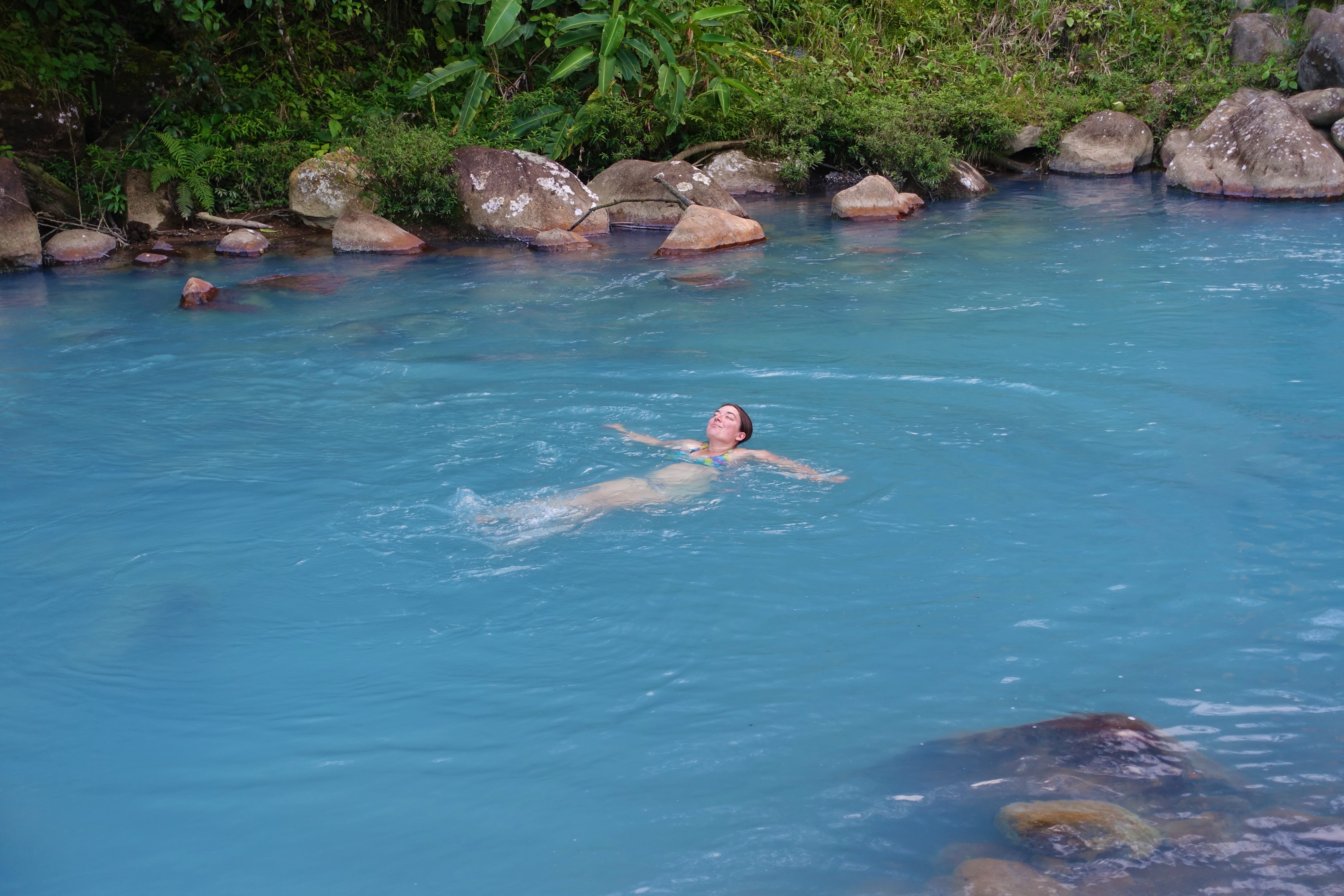
Taken by Geoff

